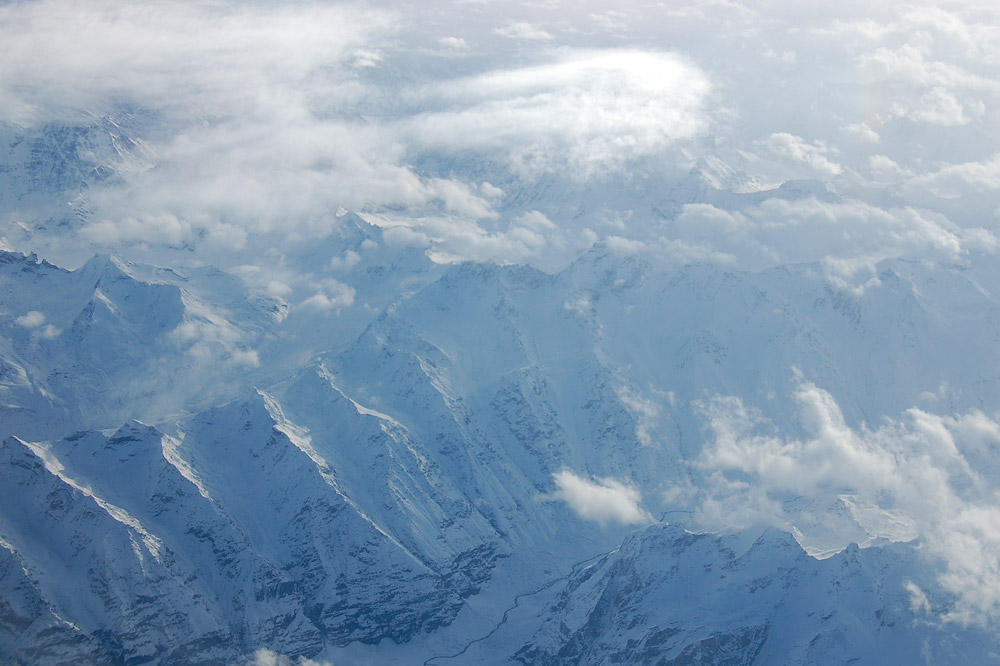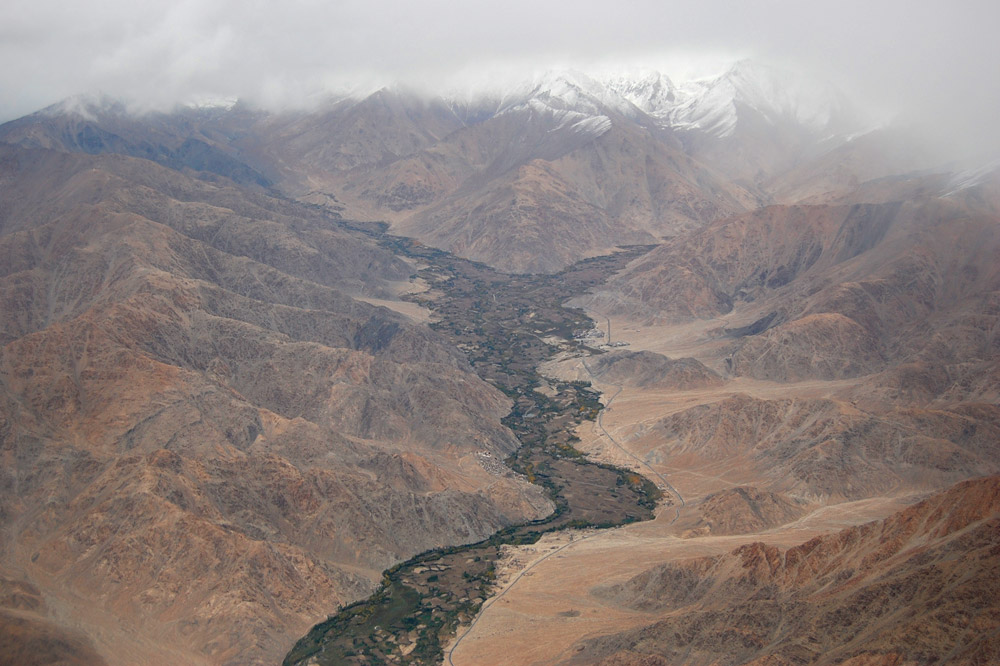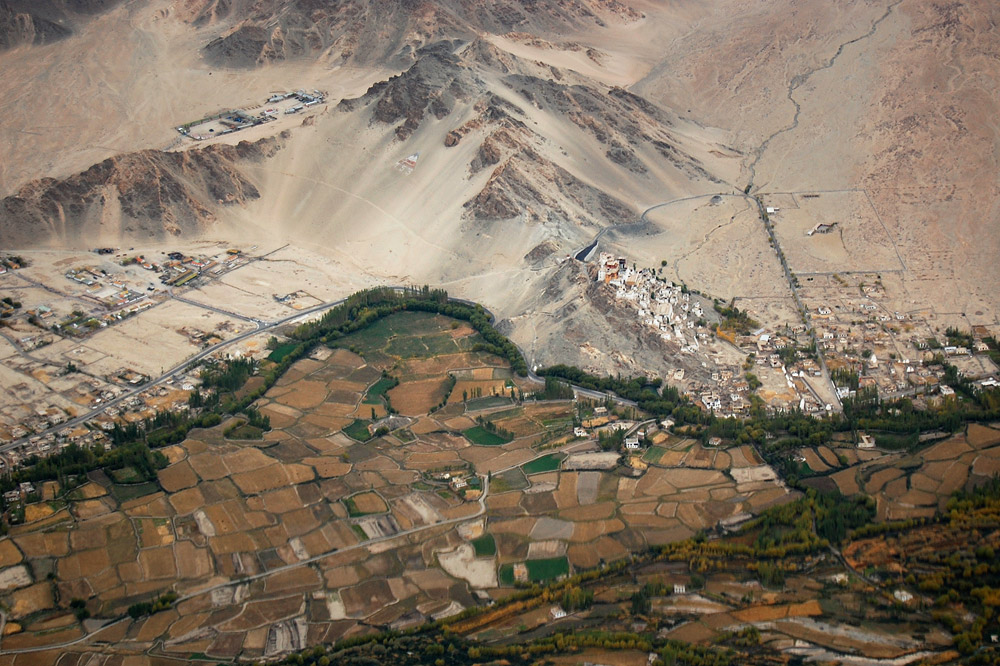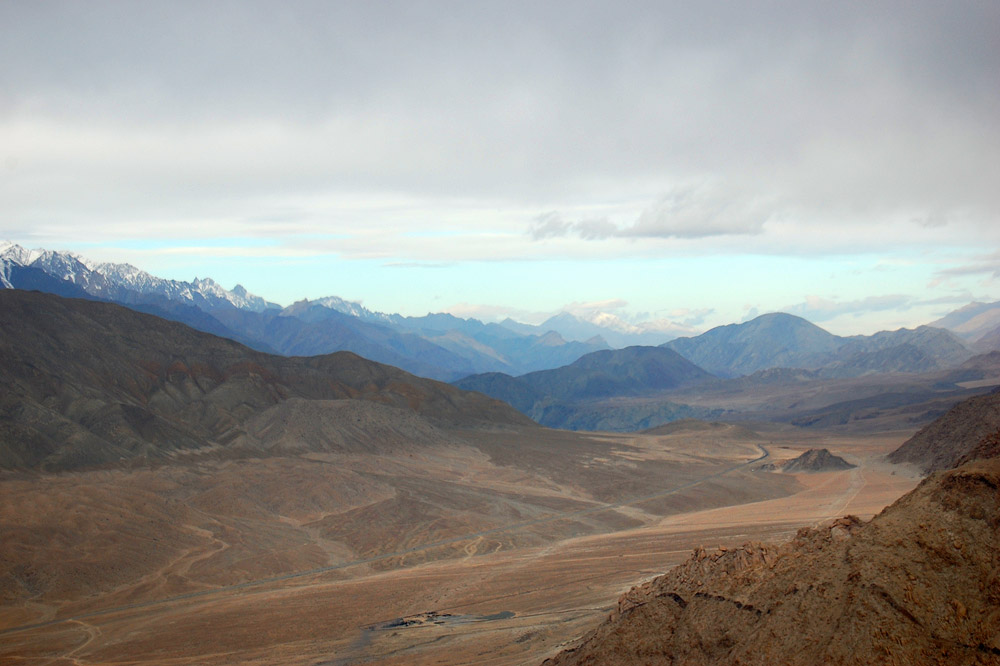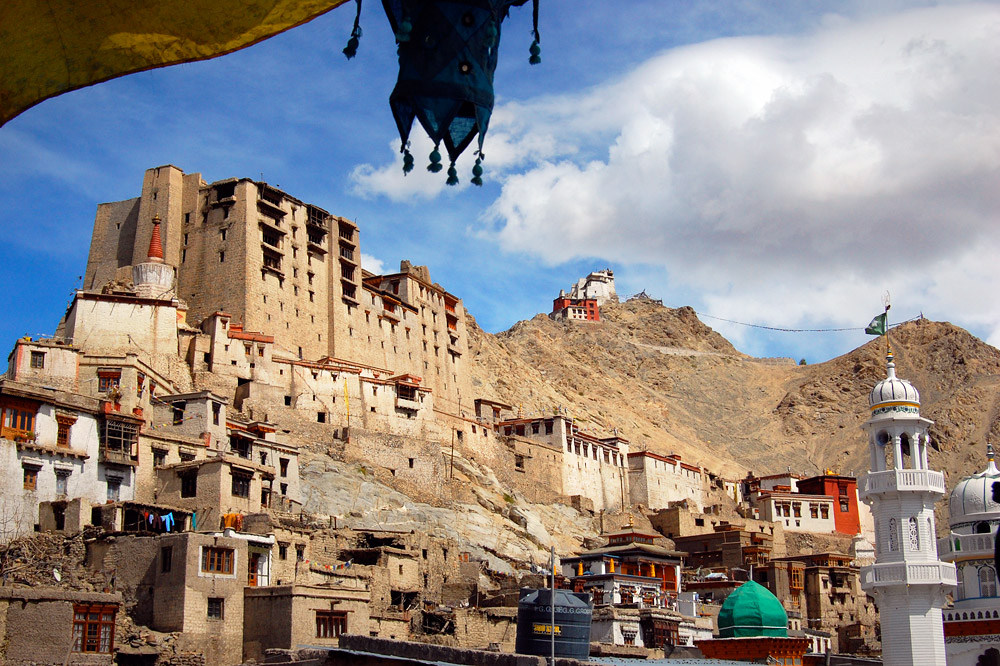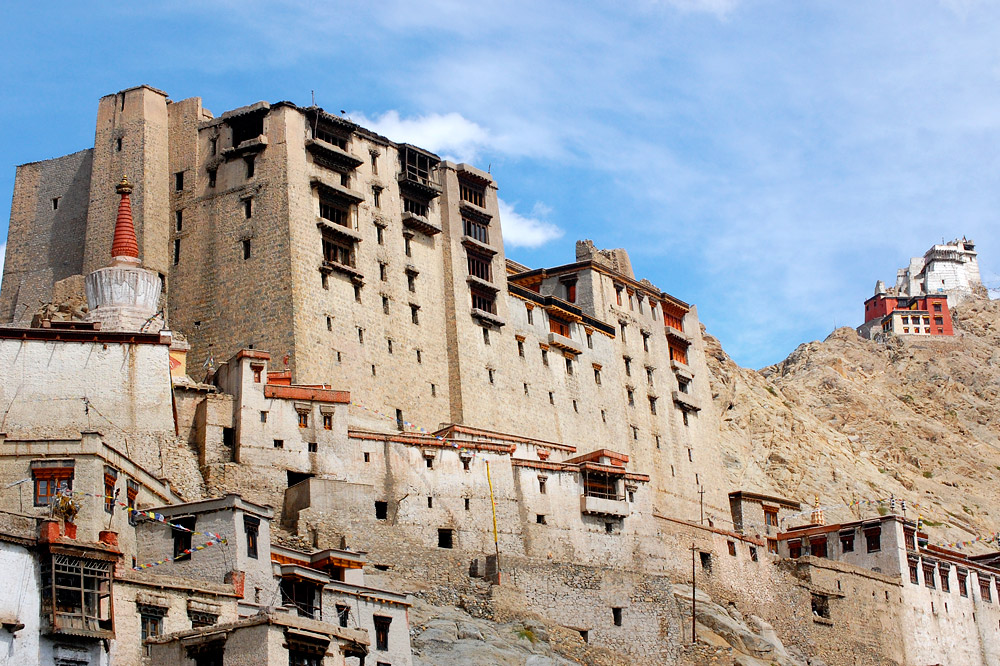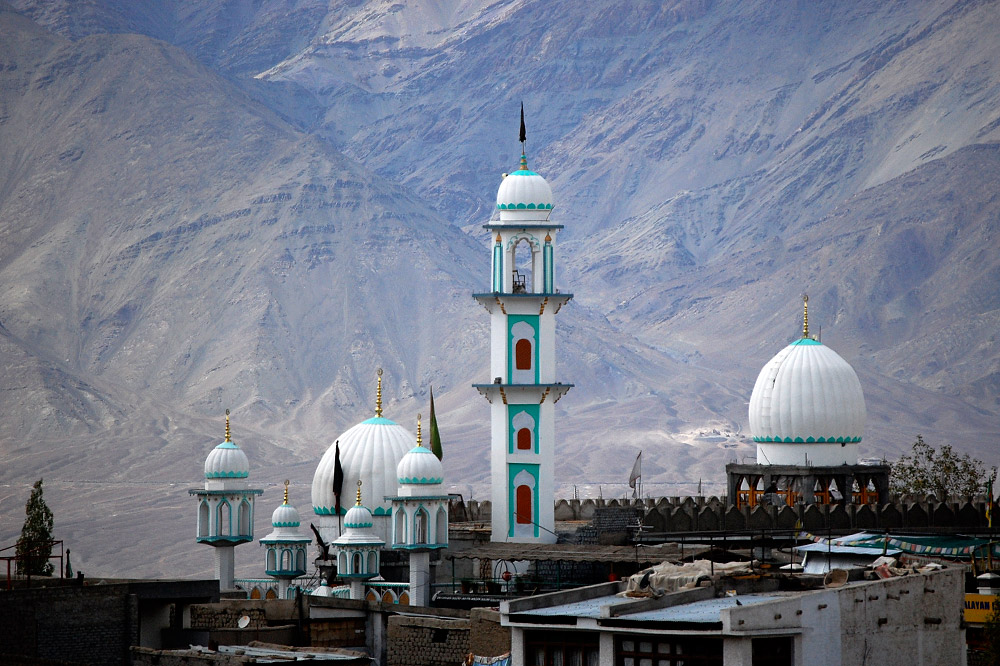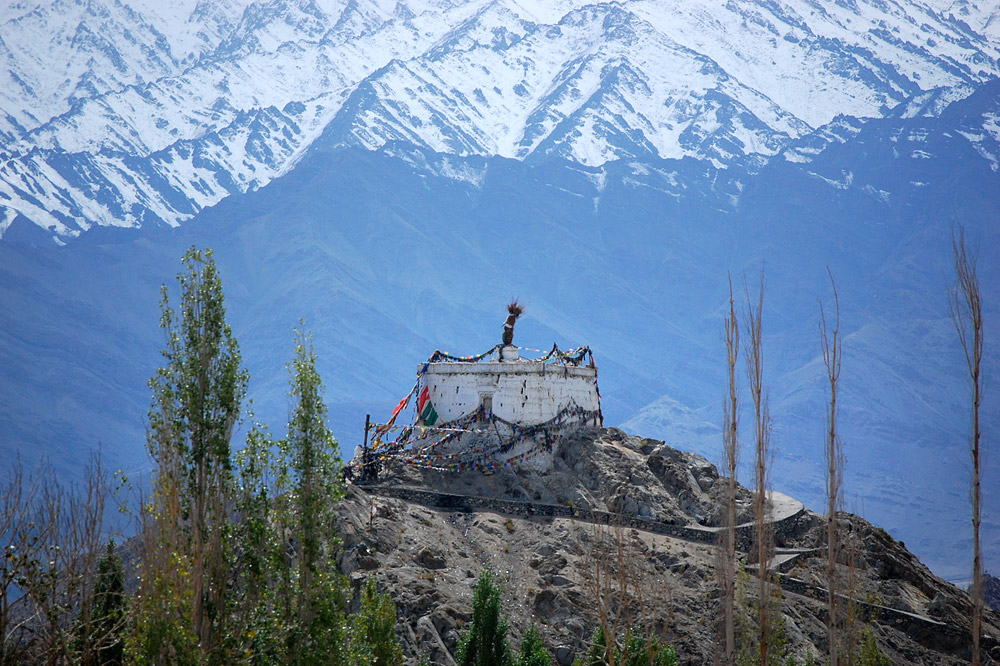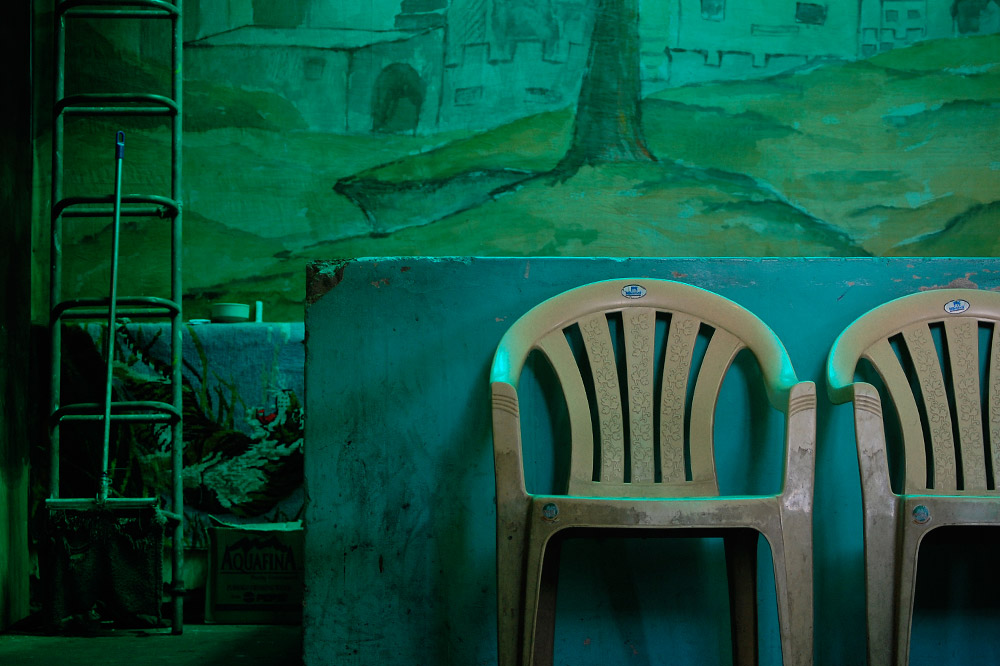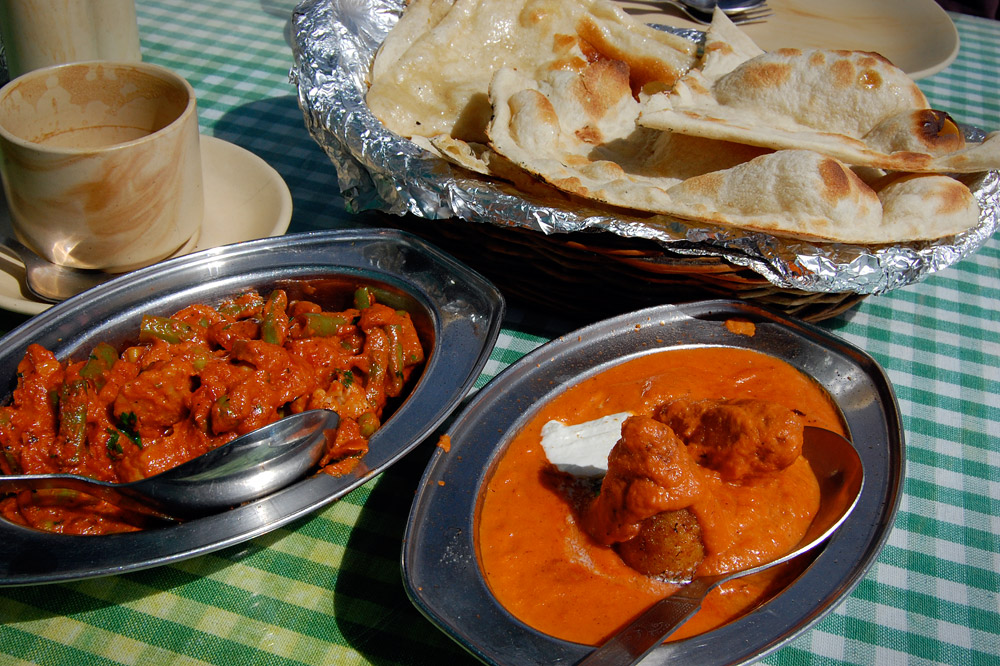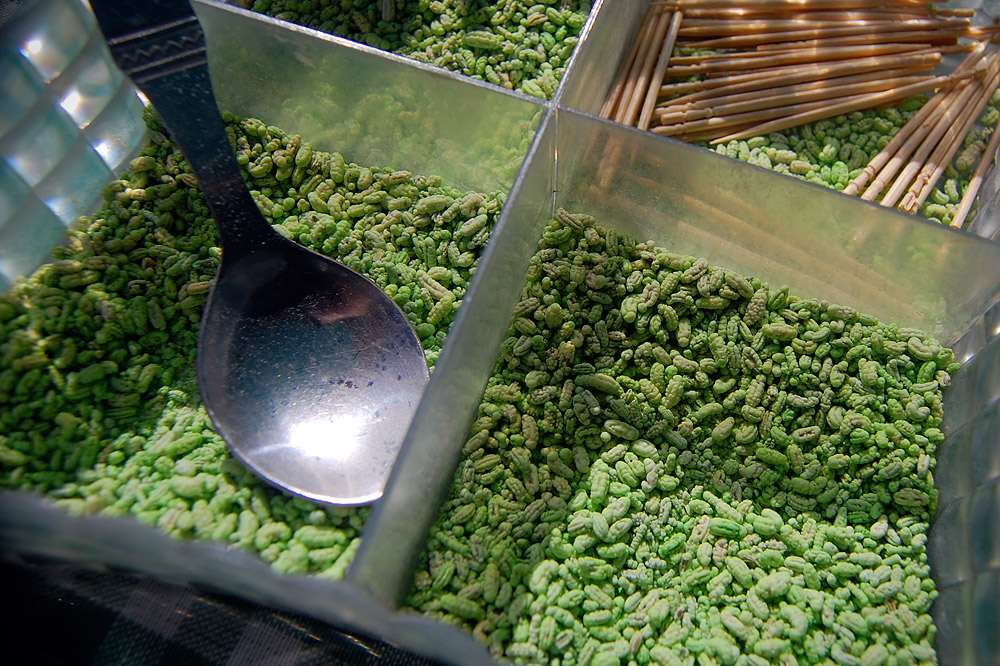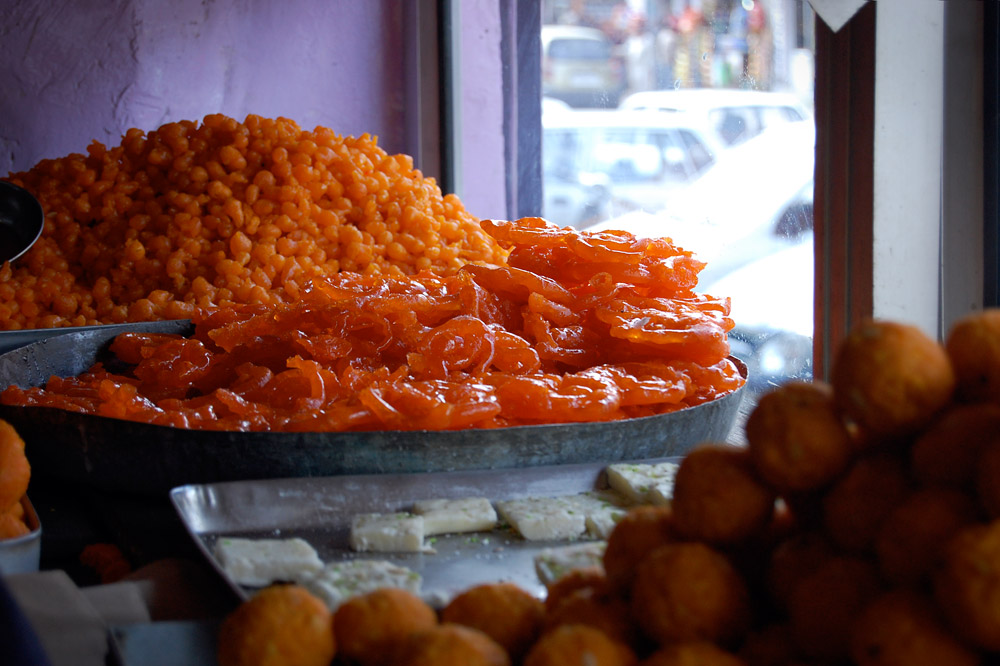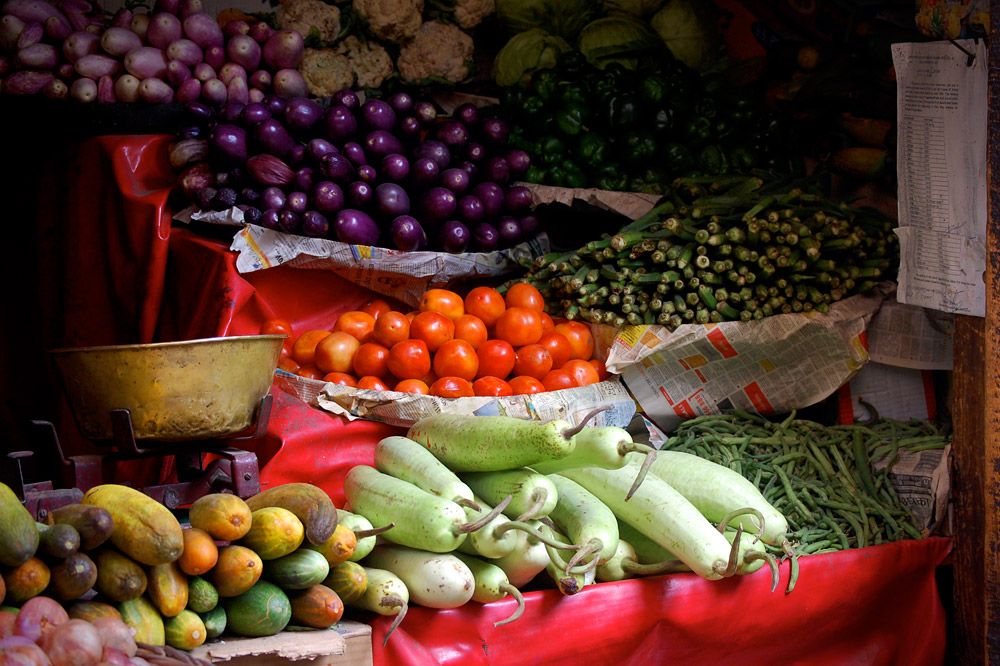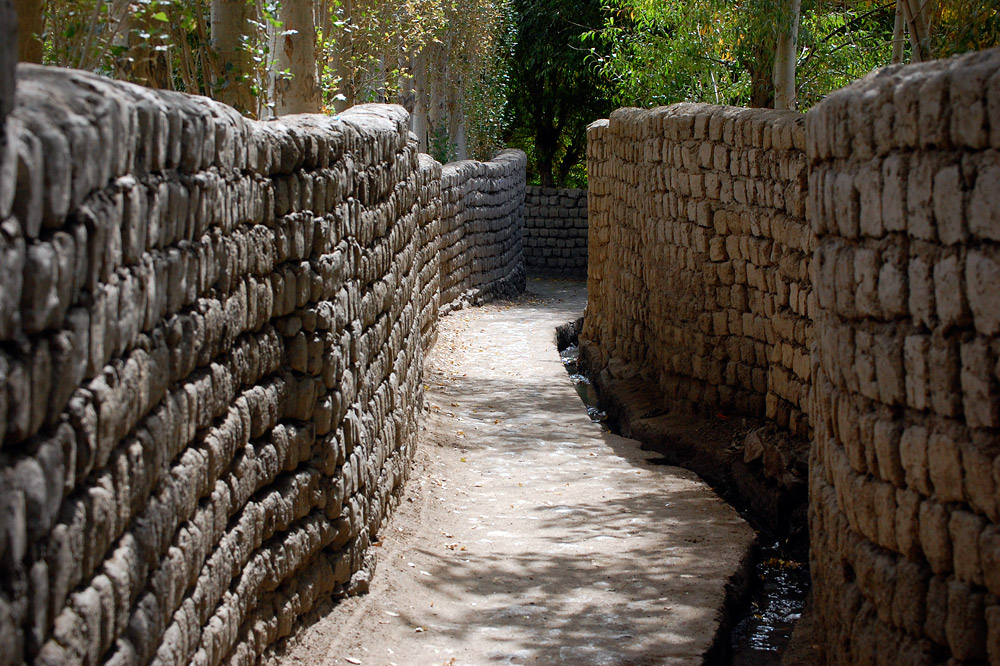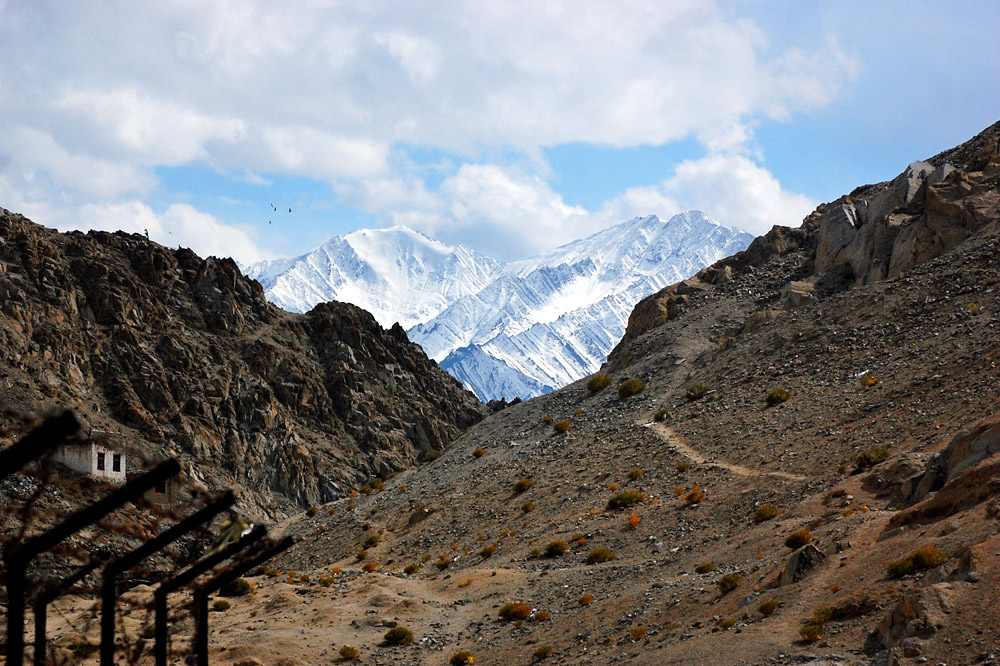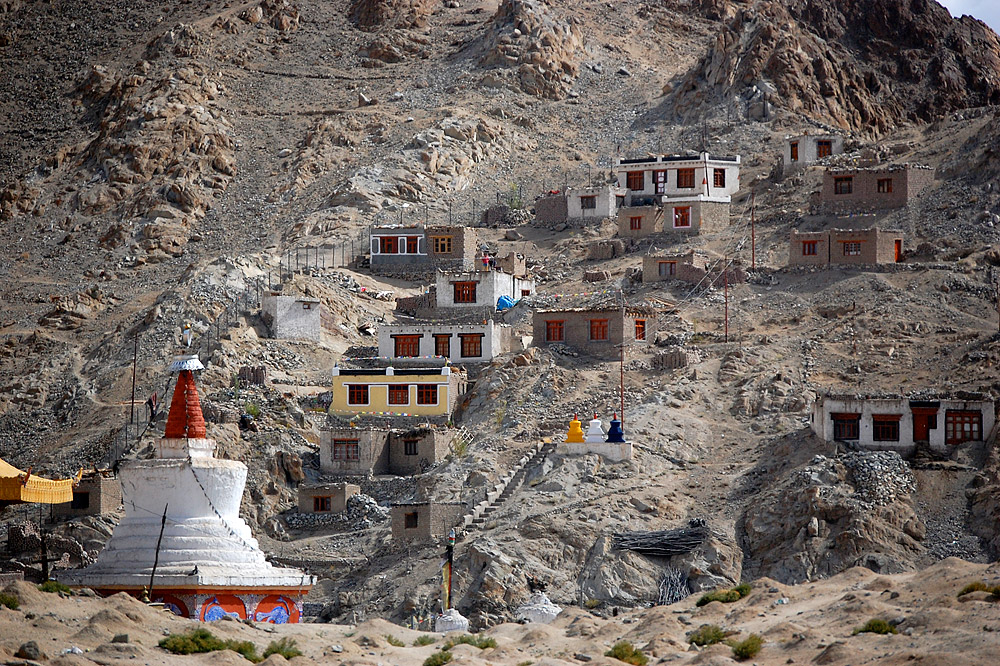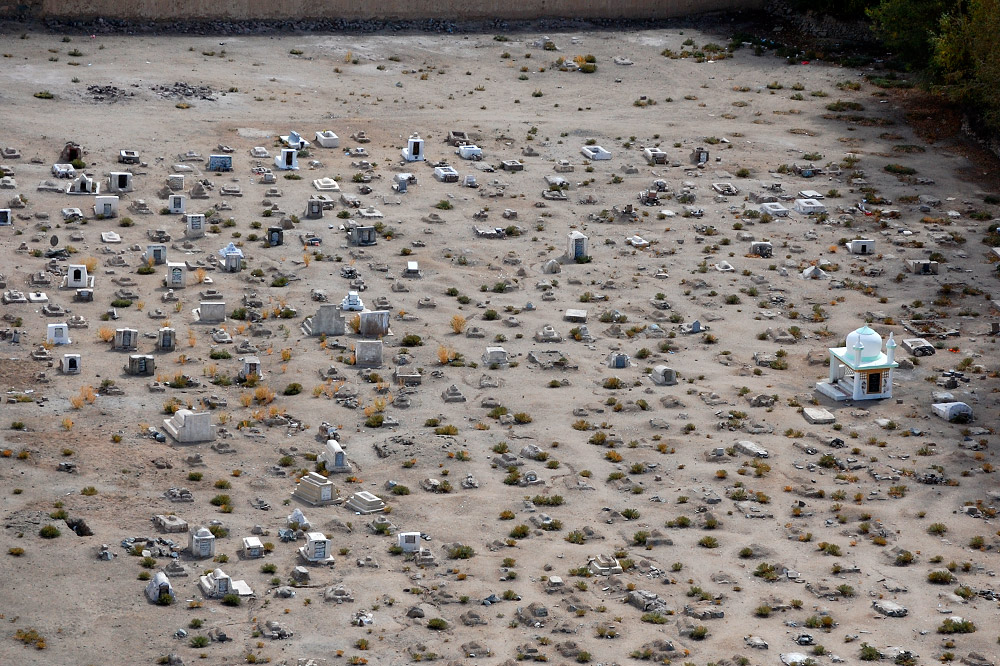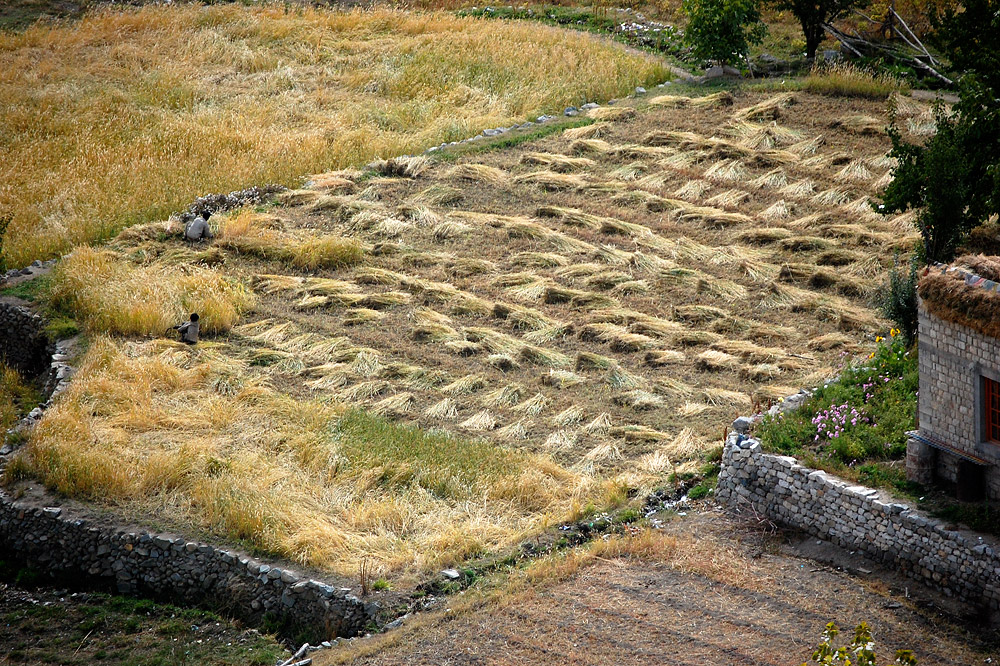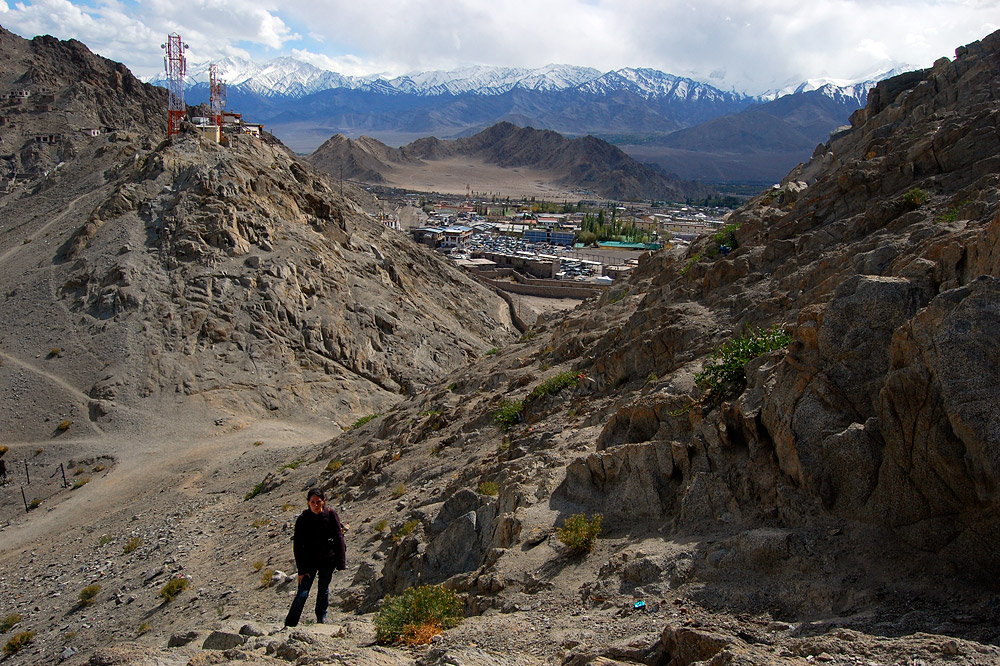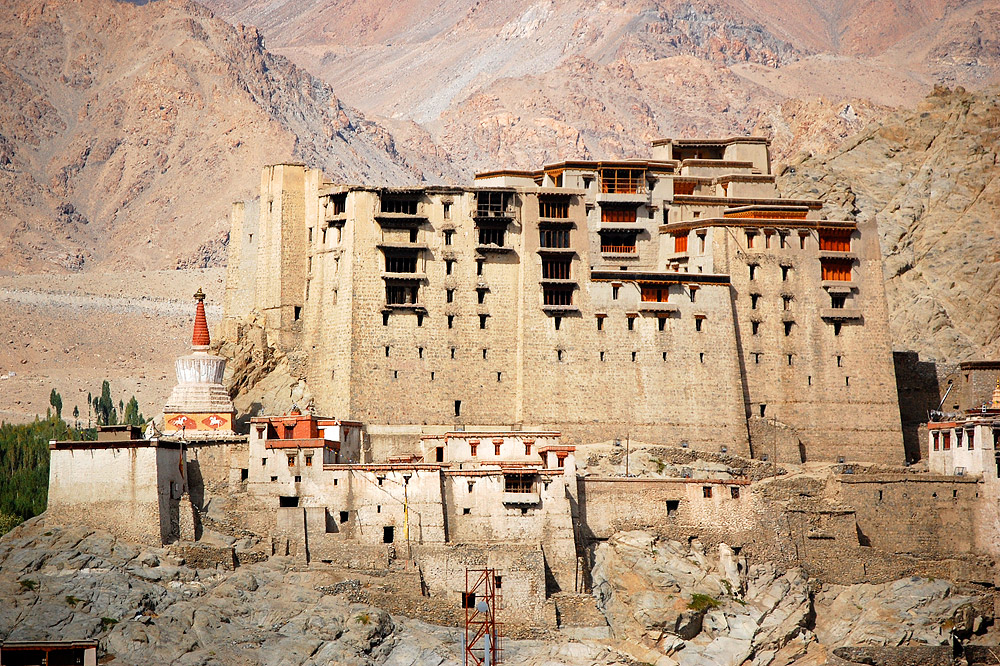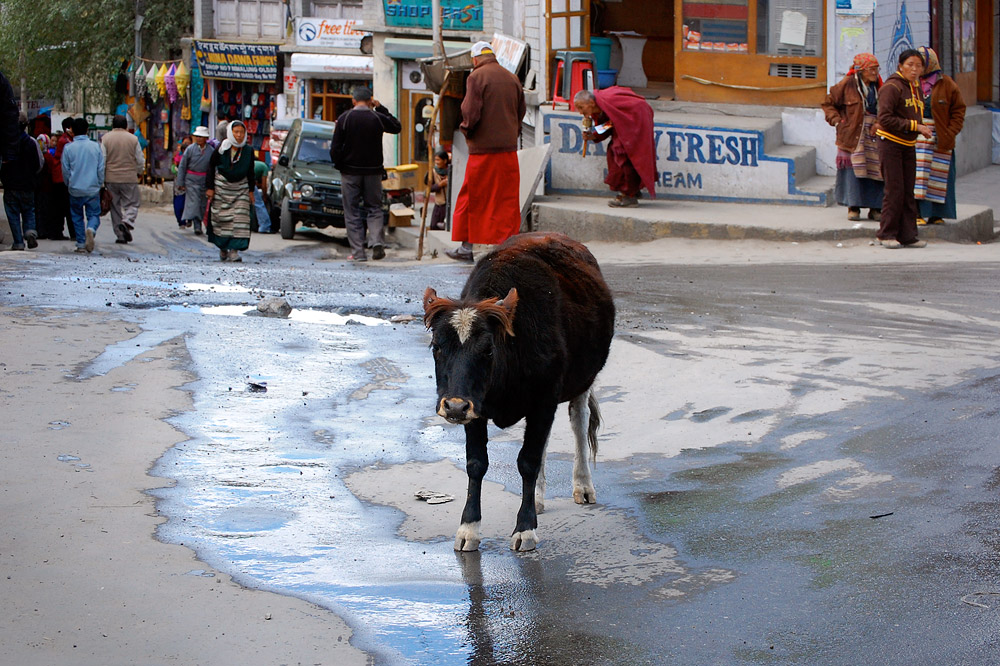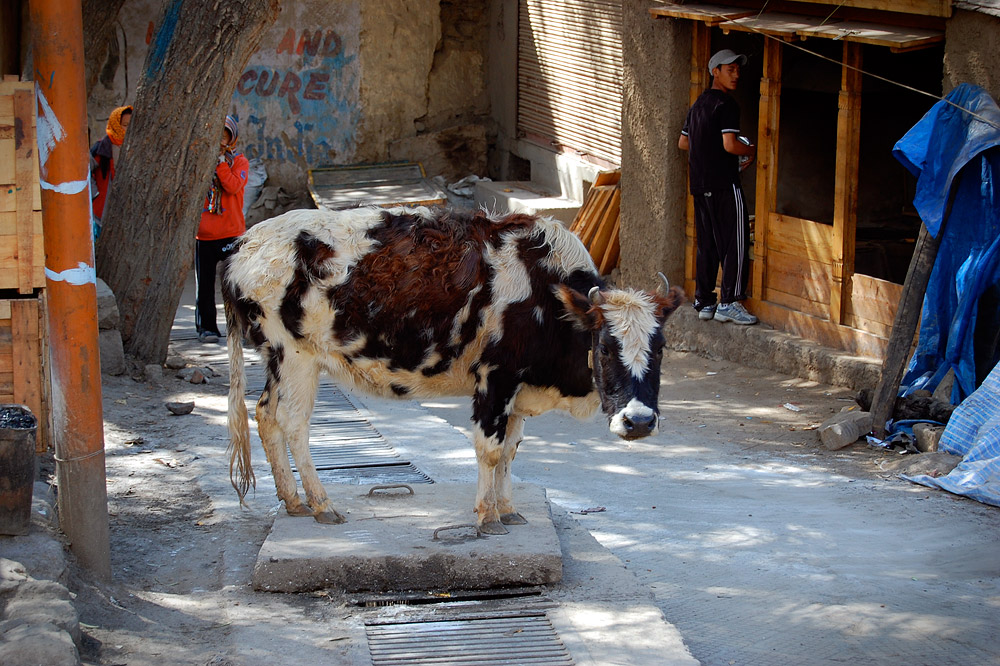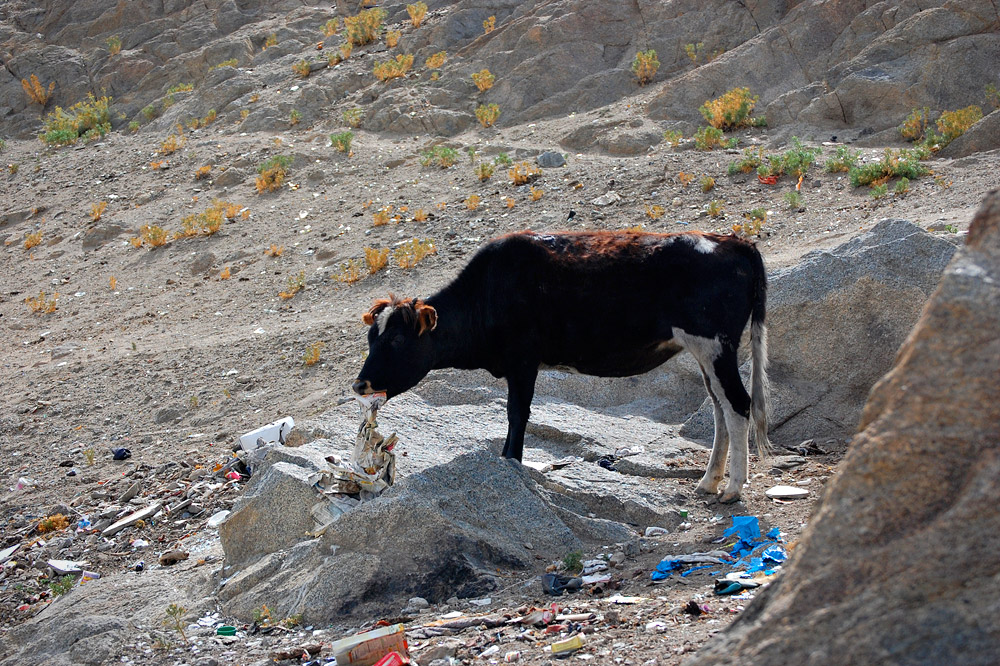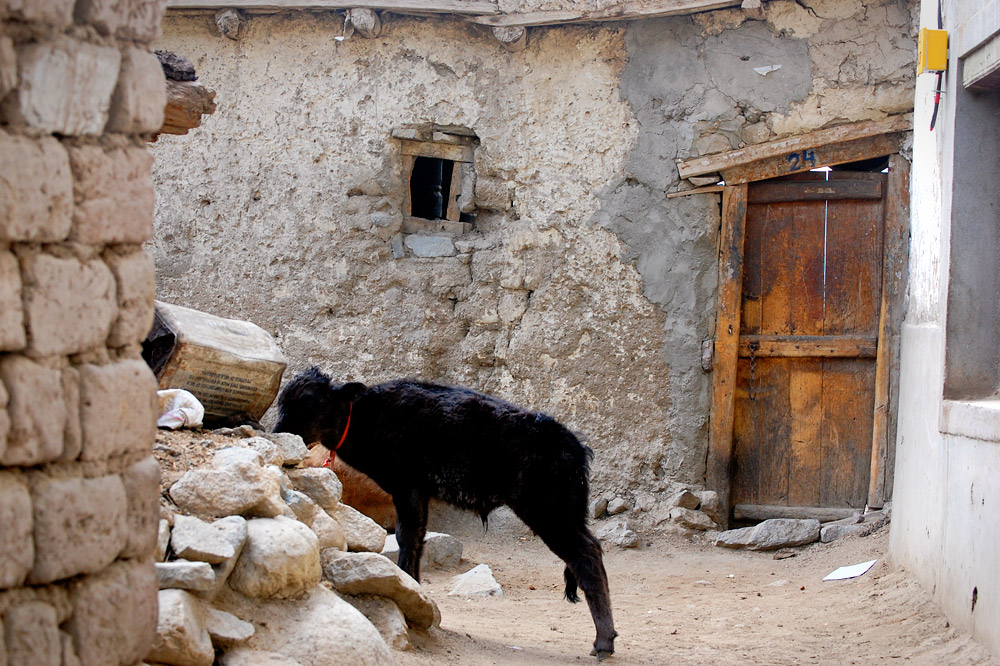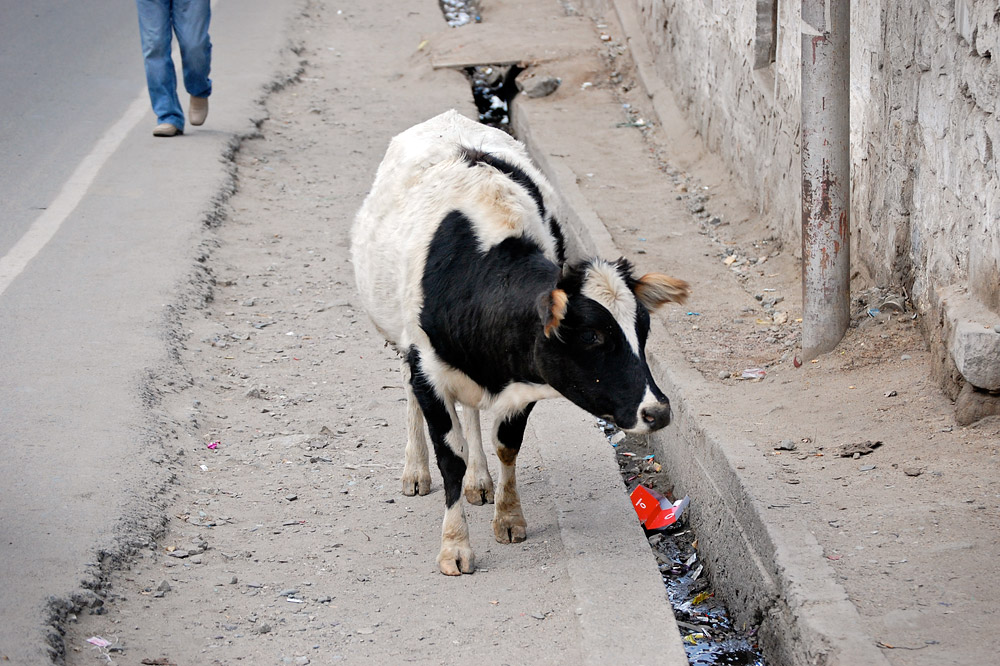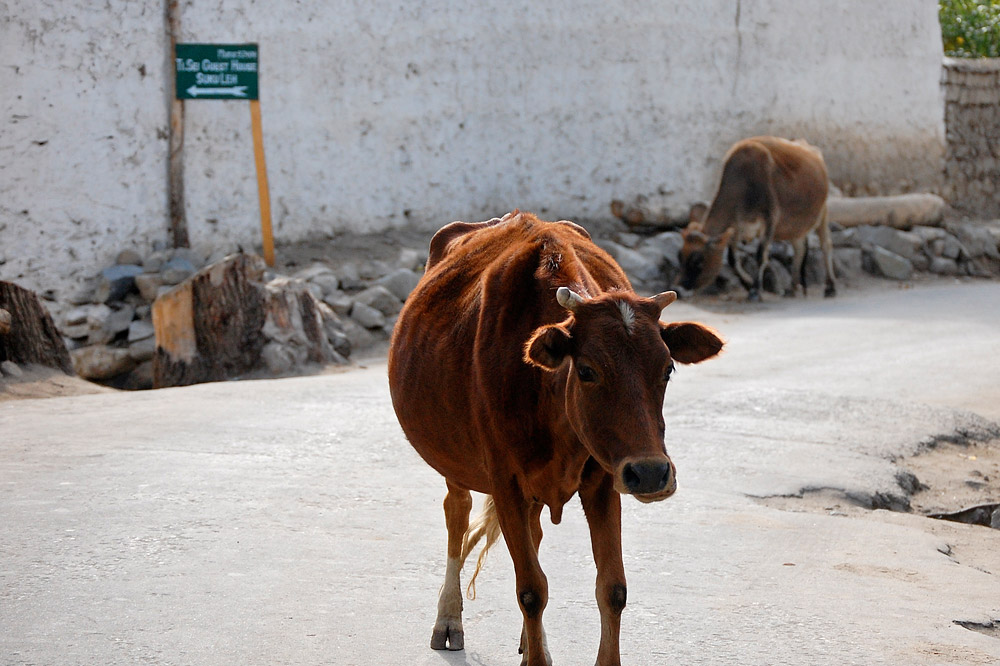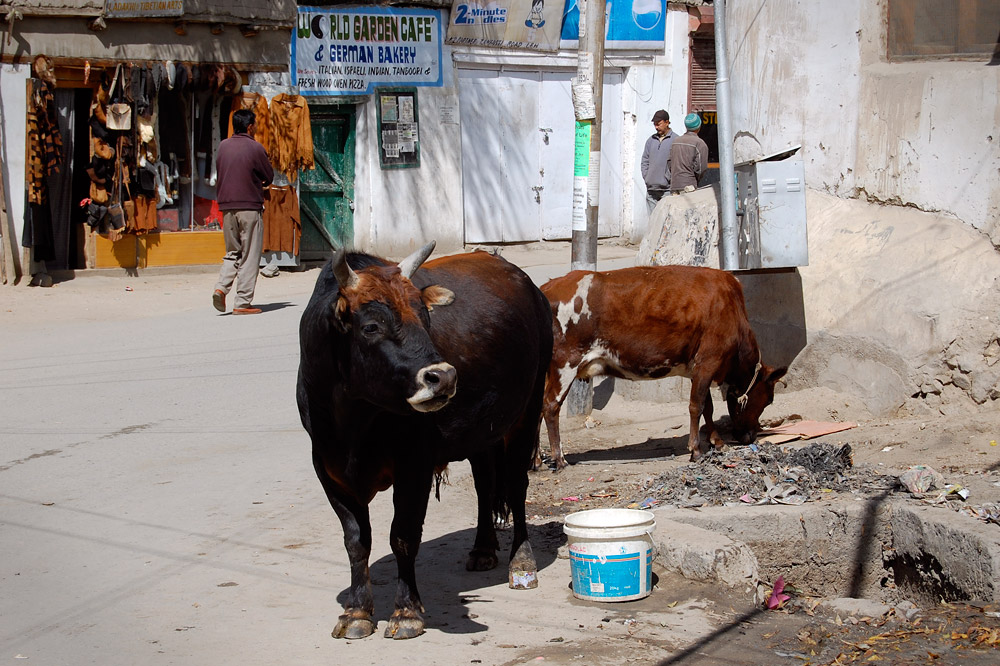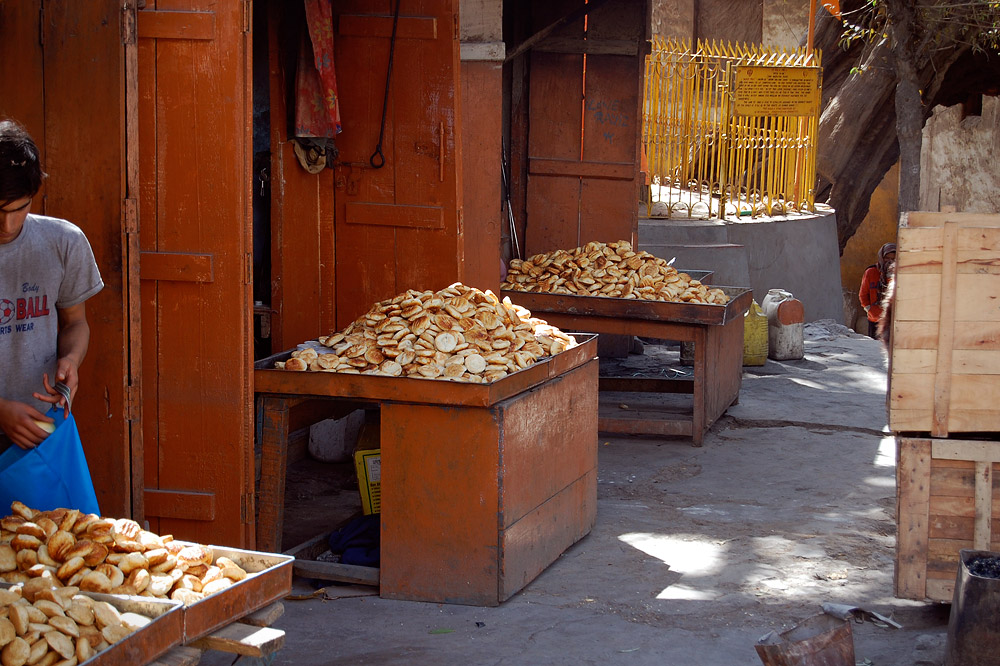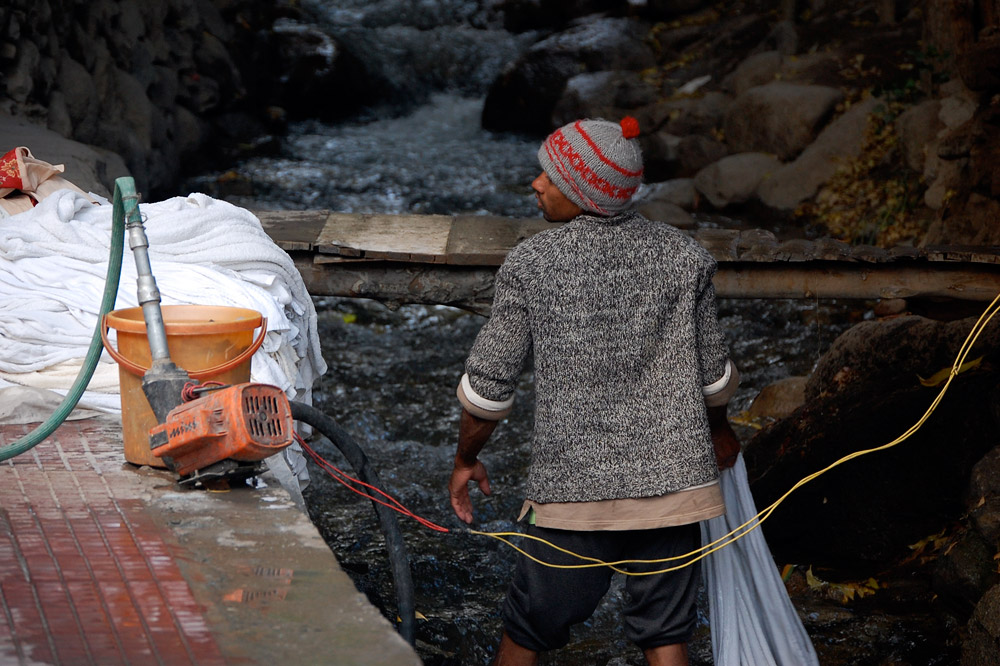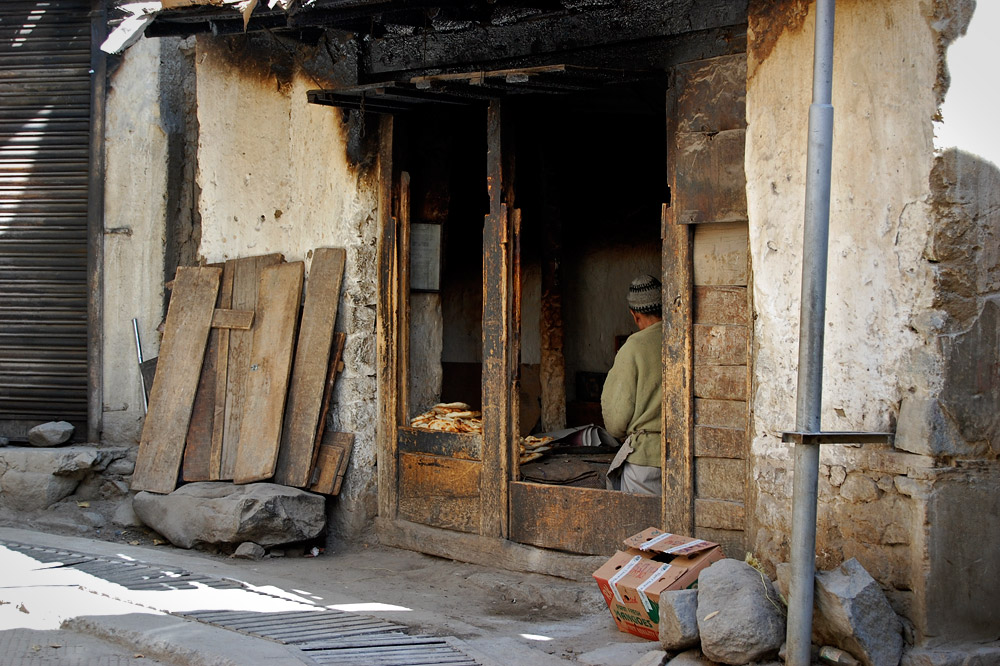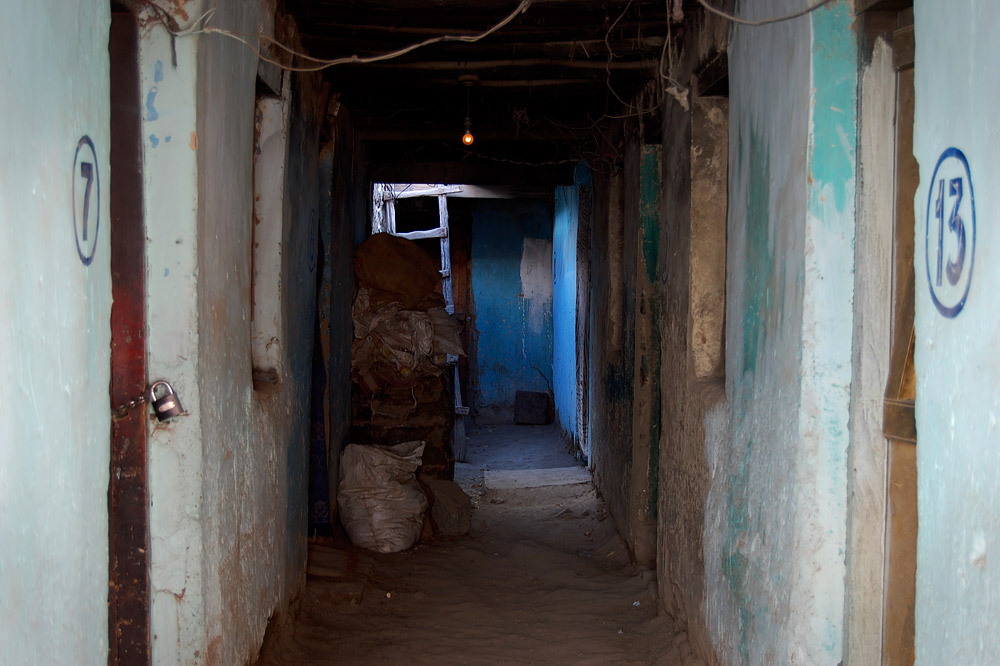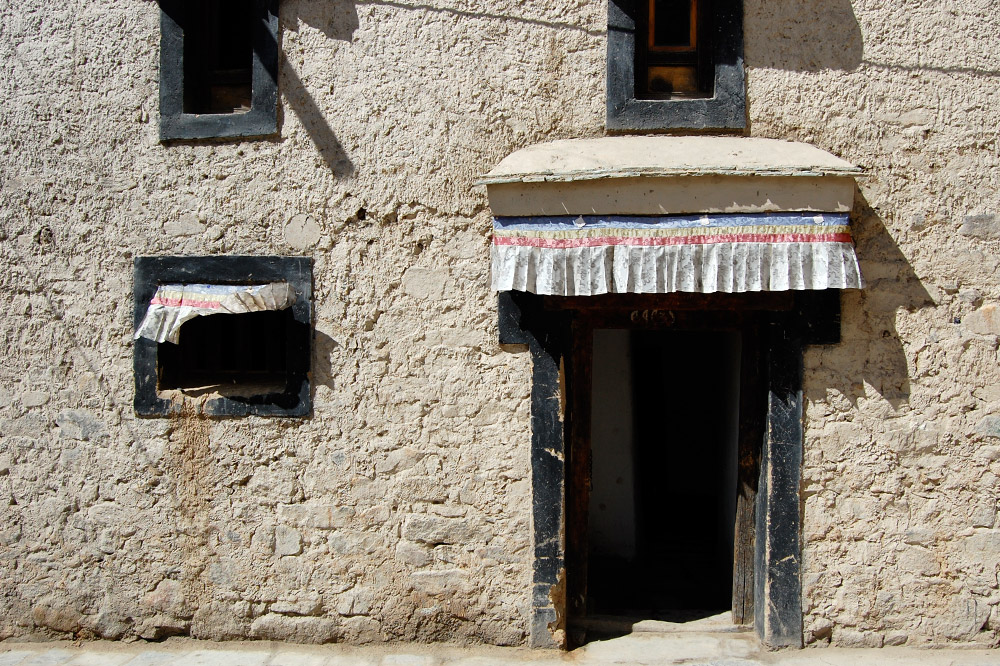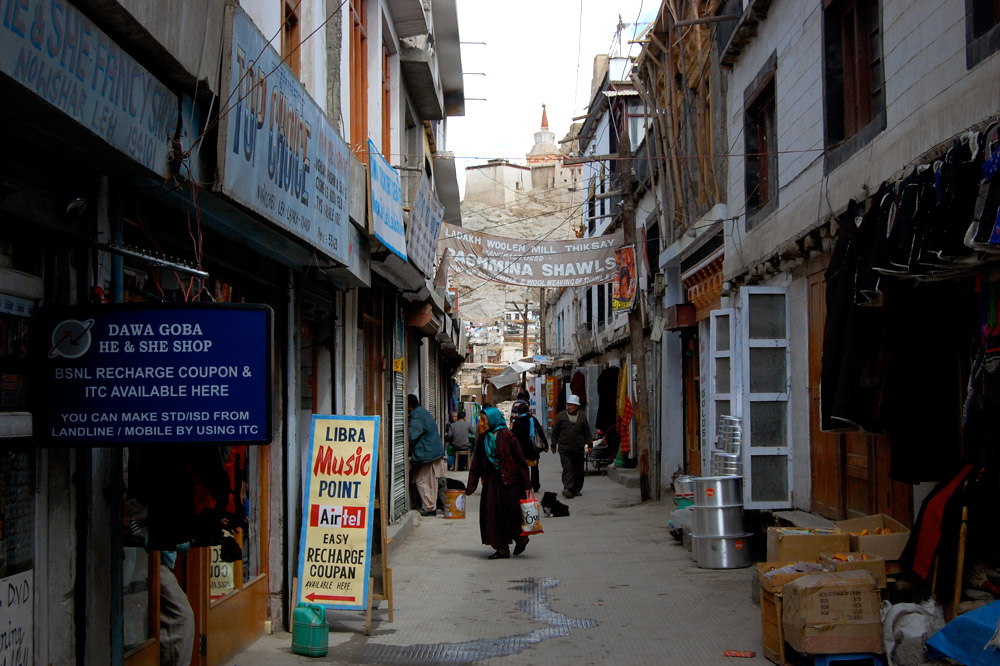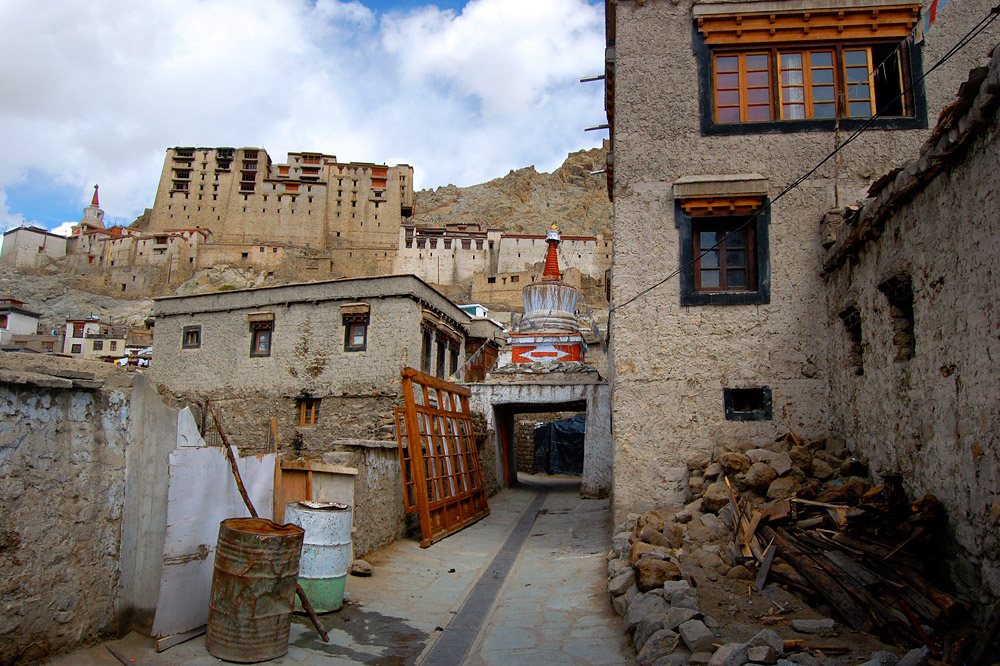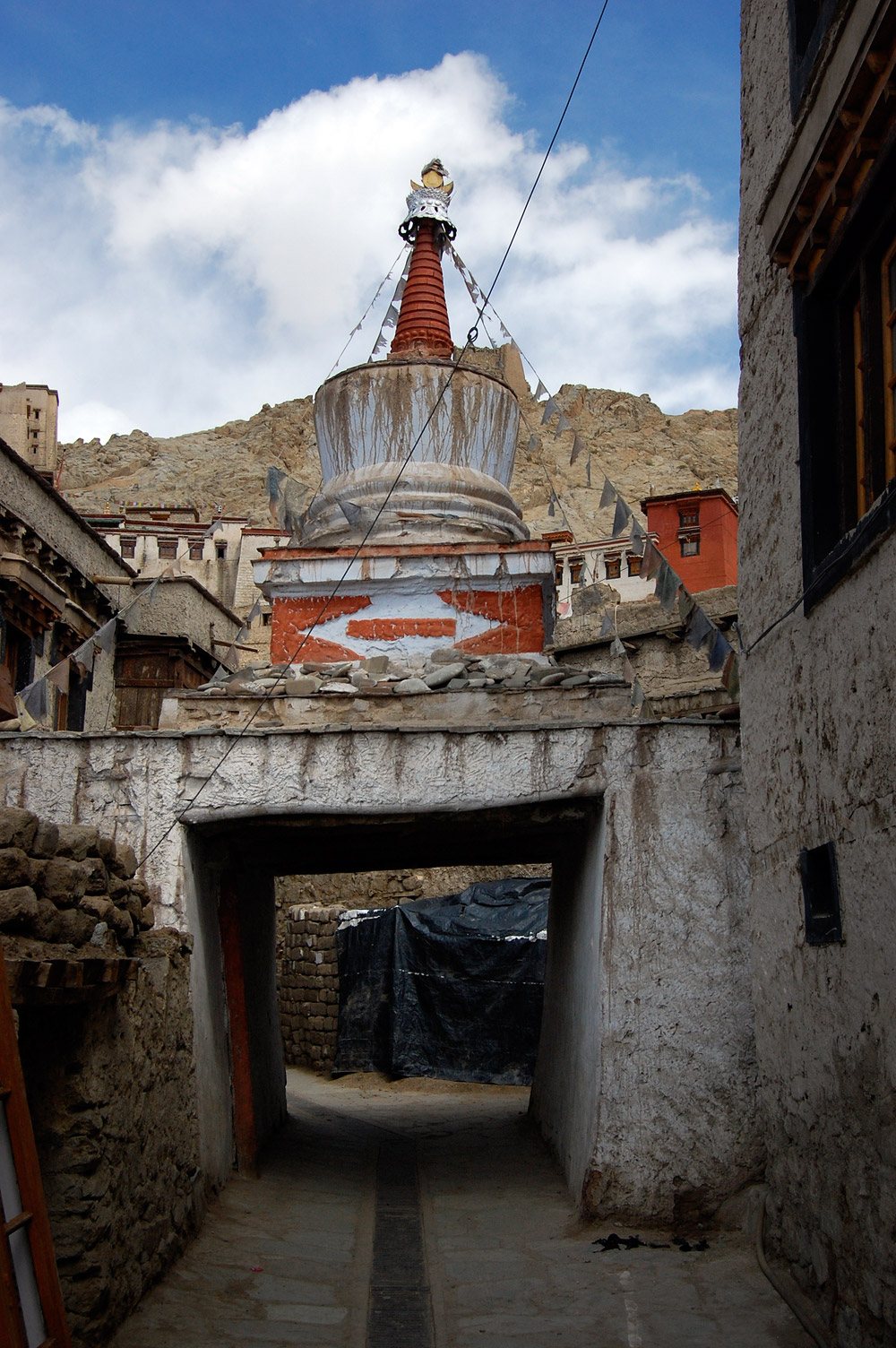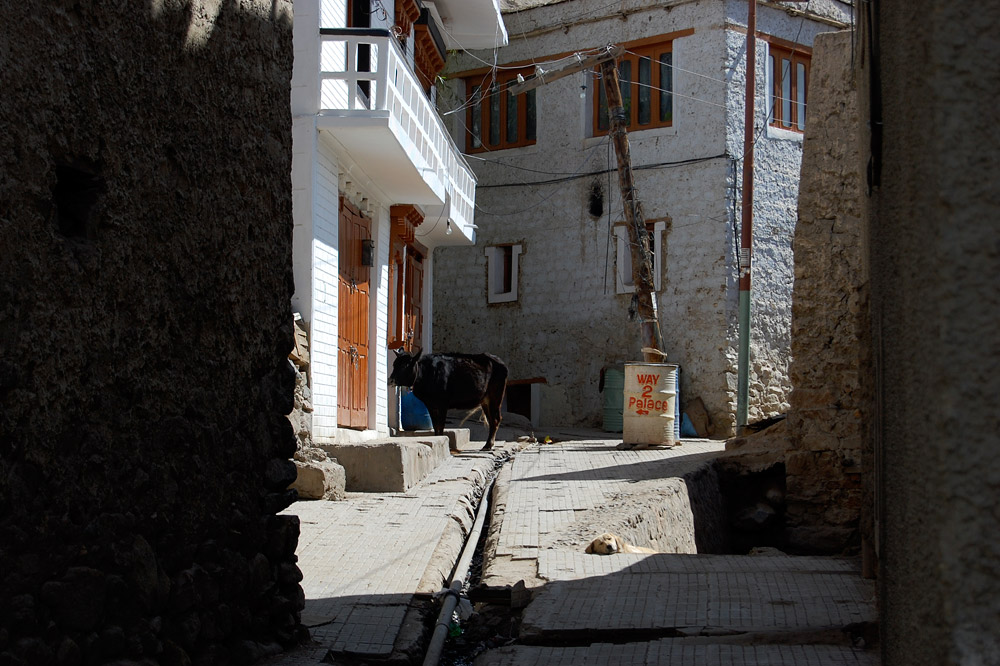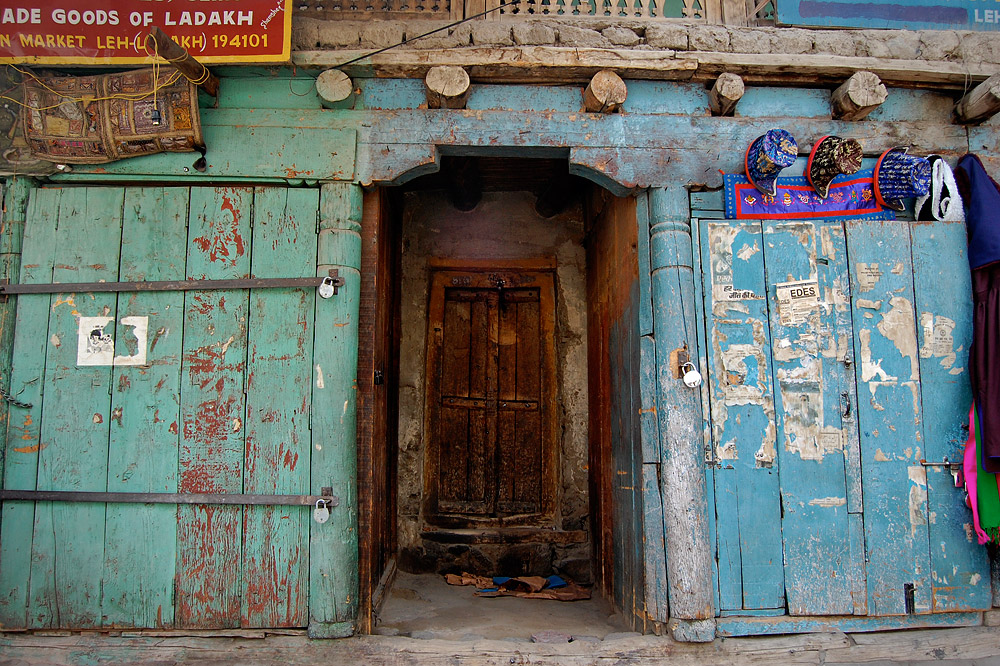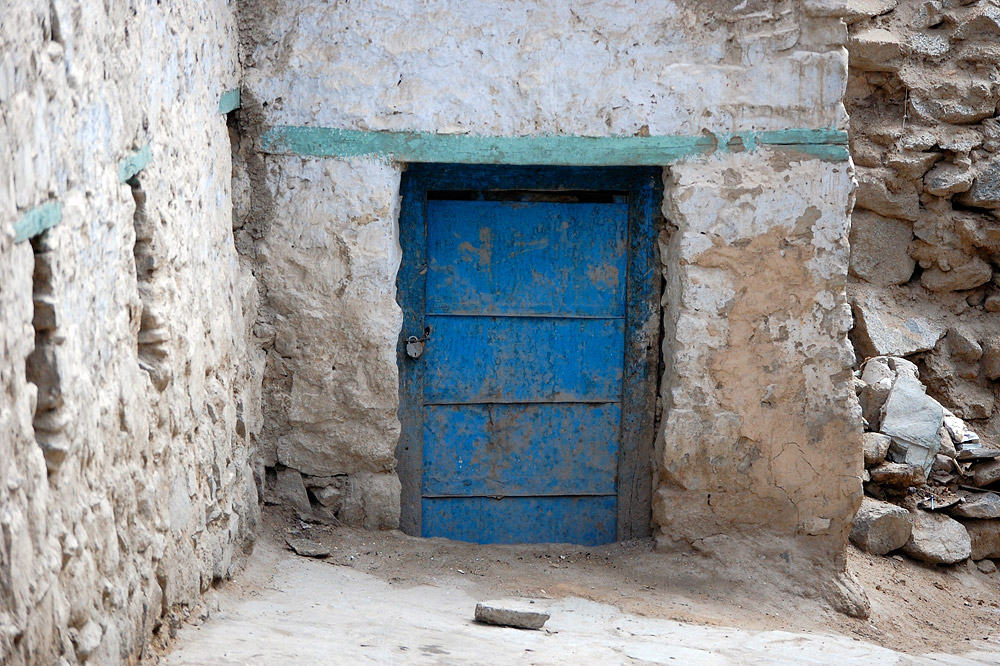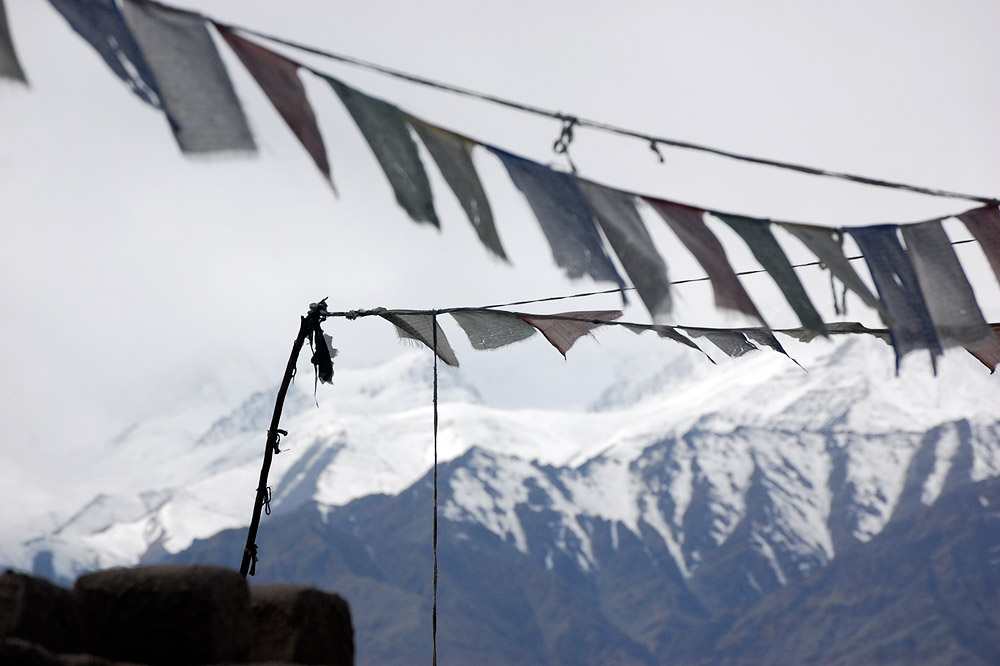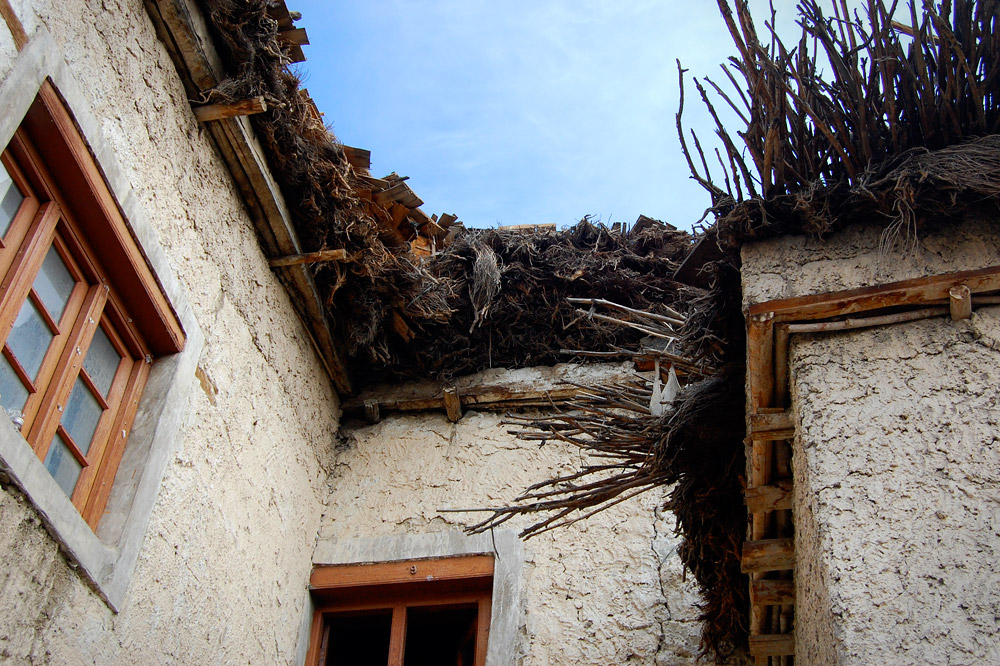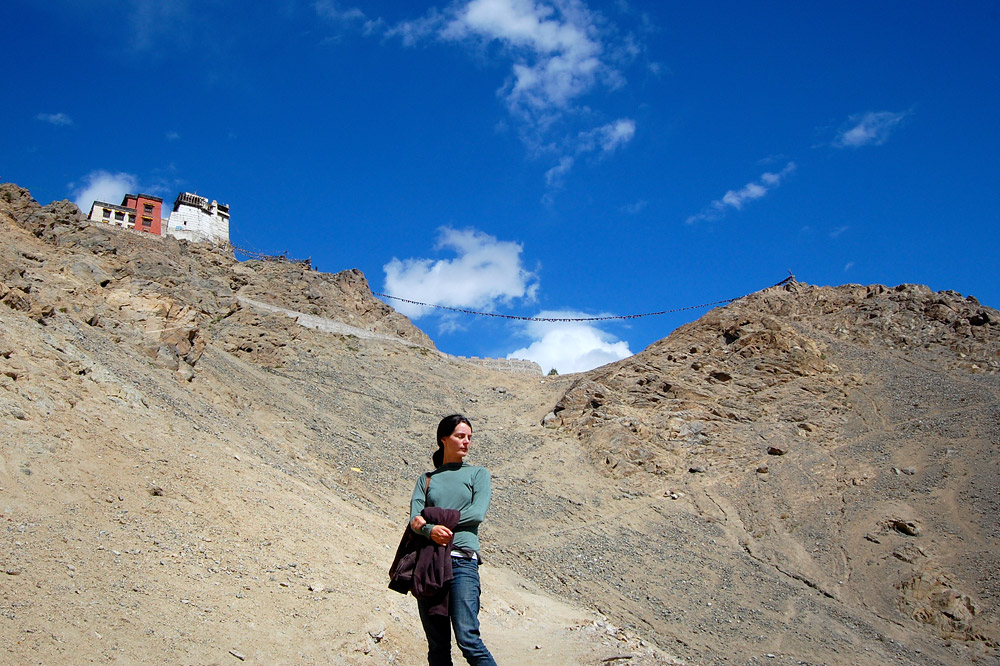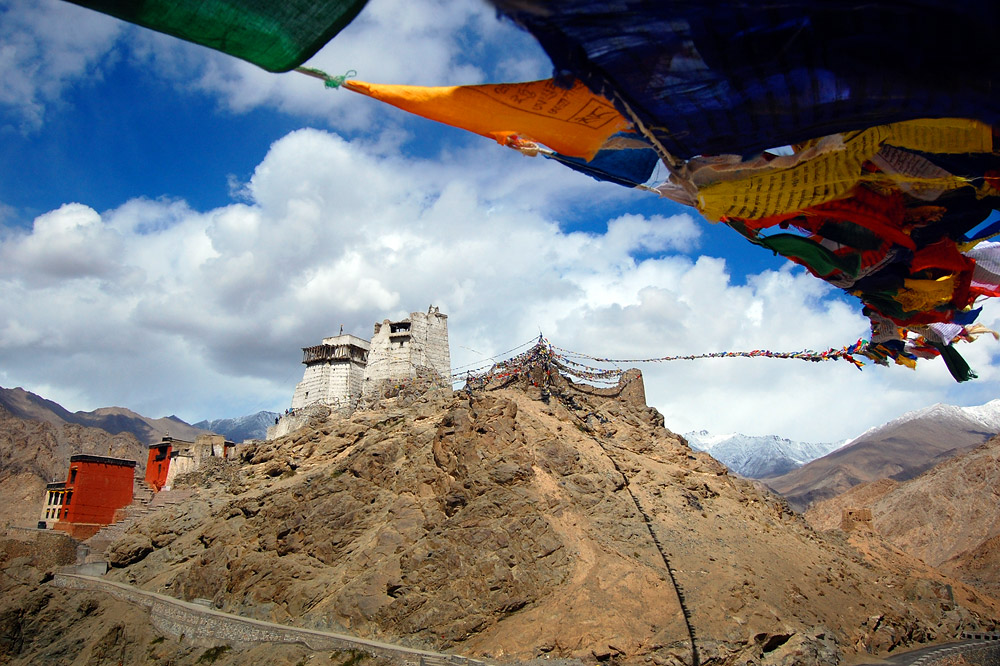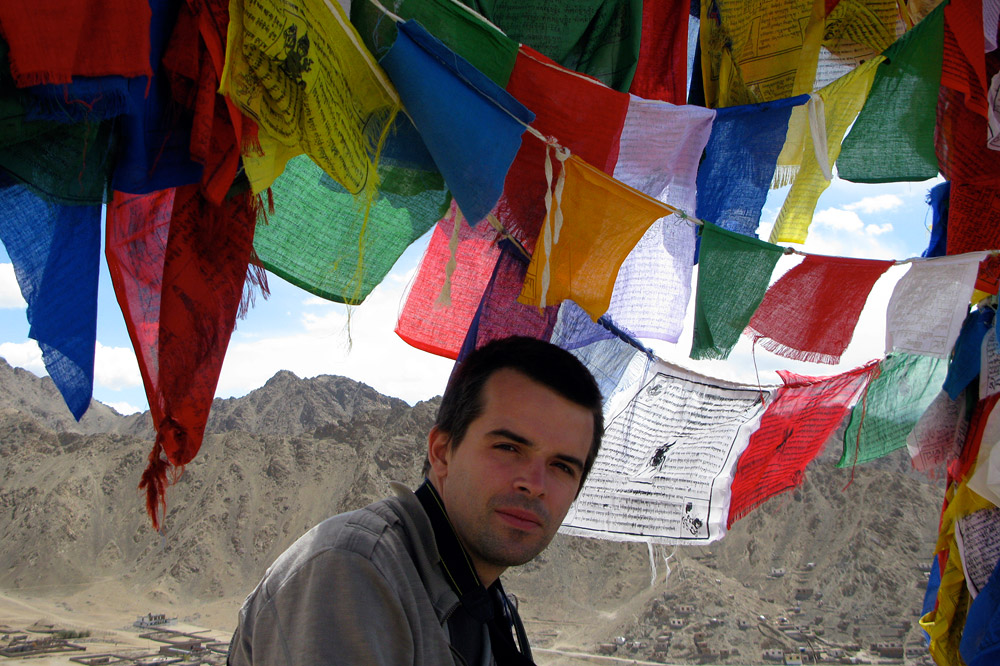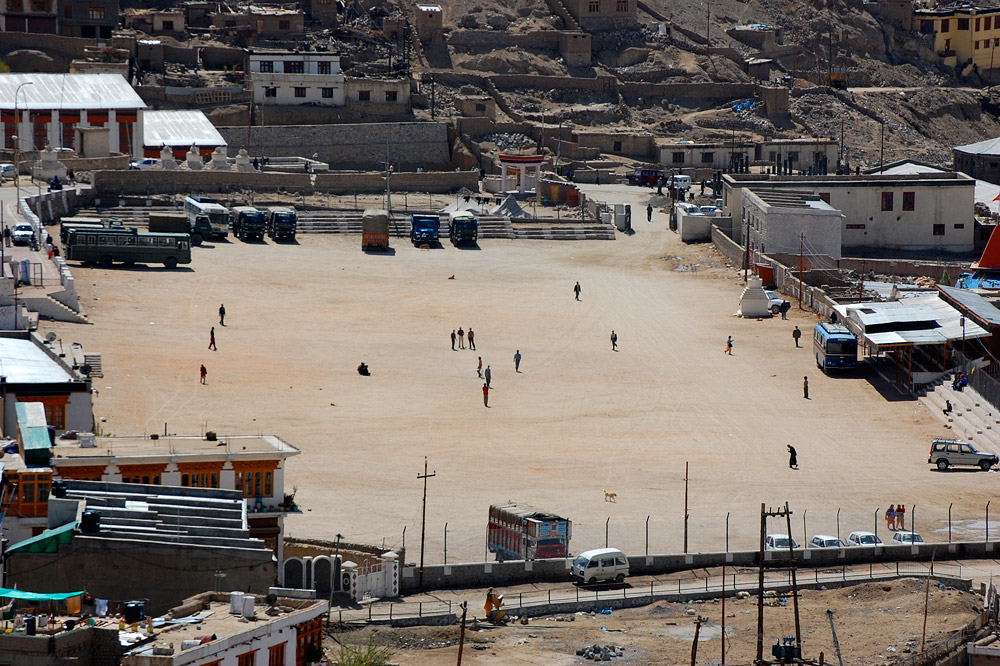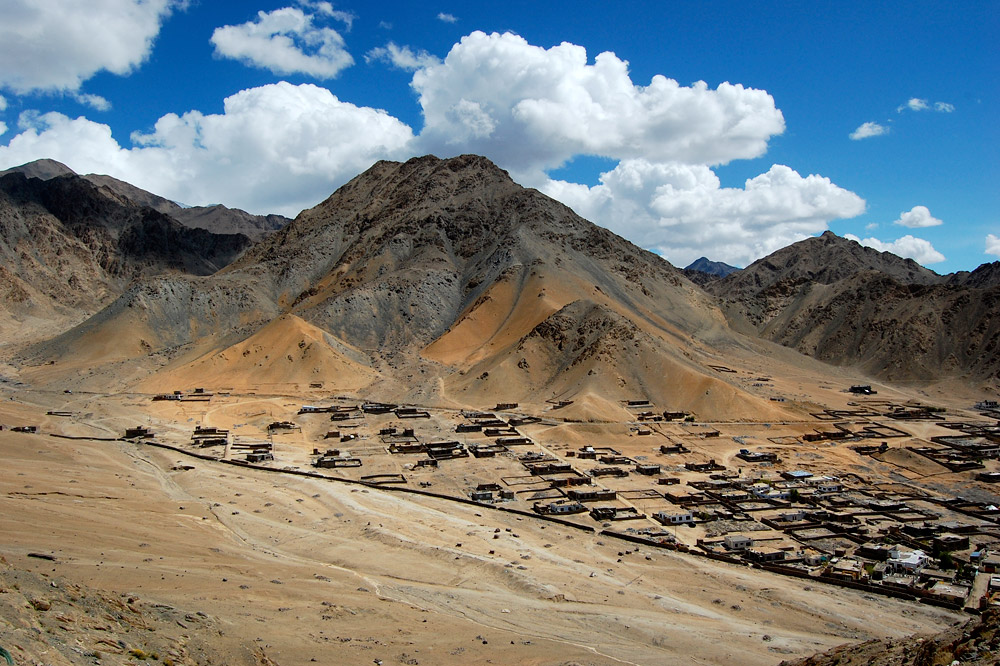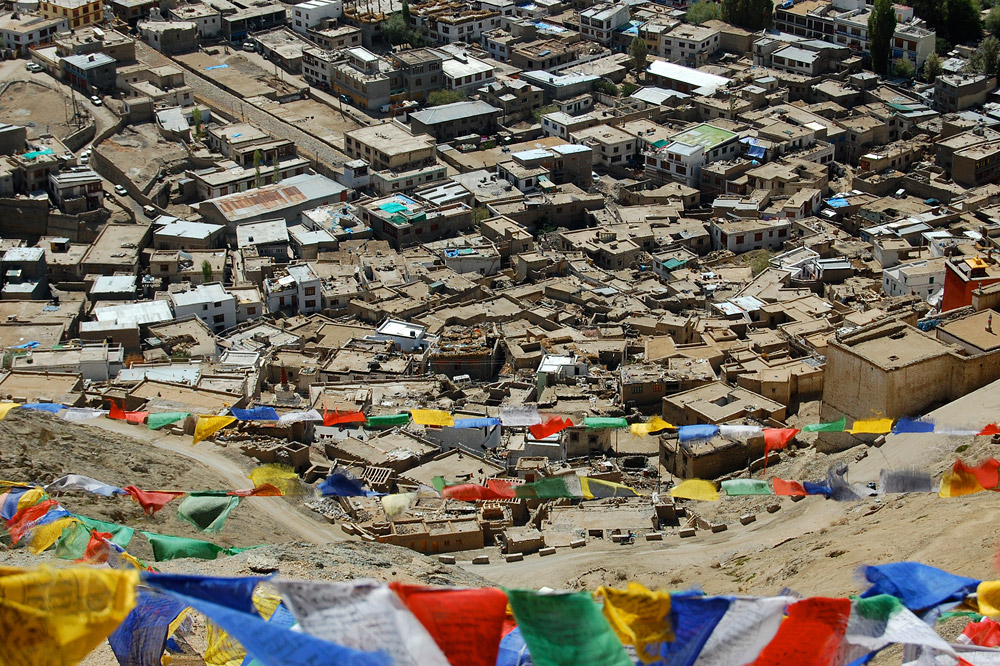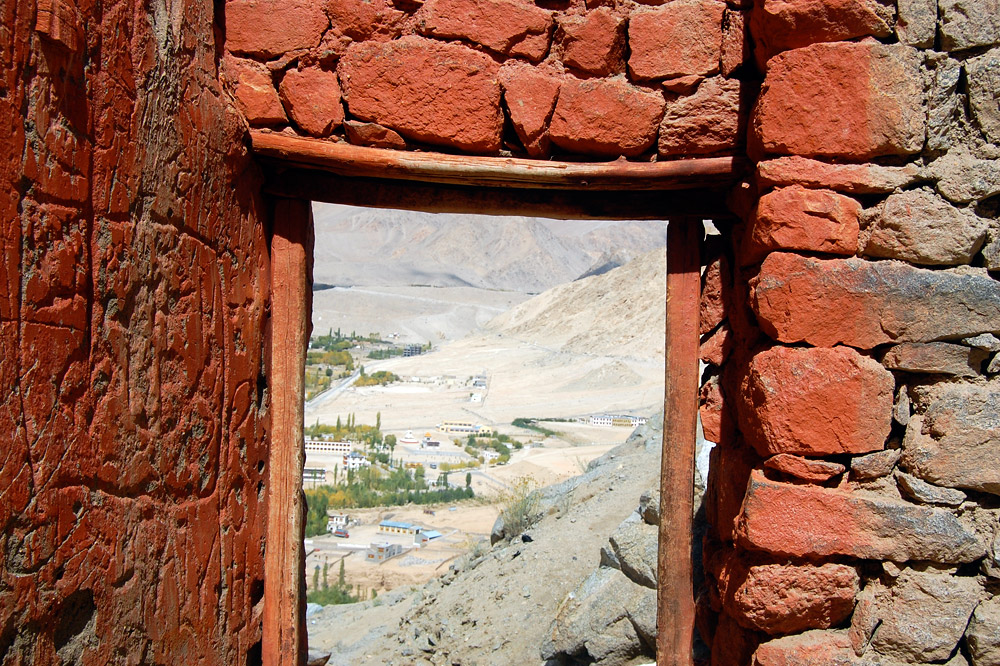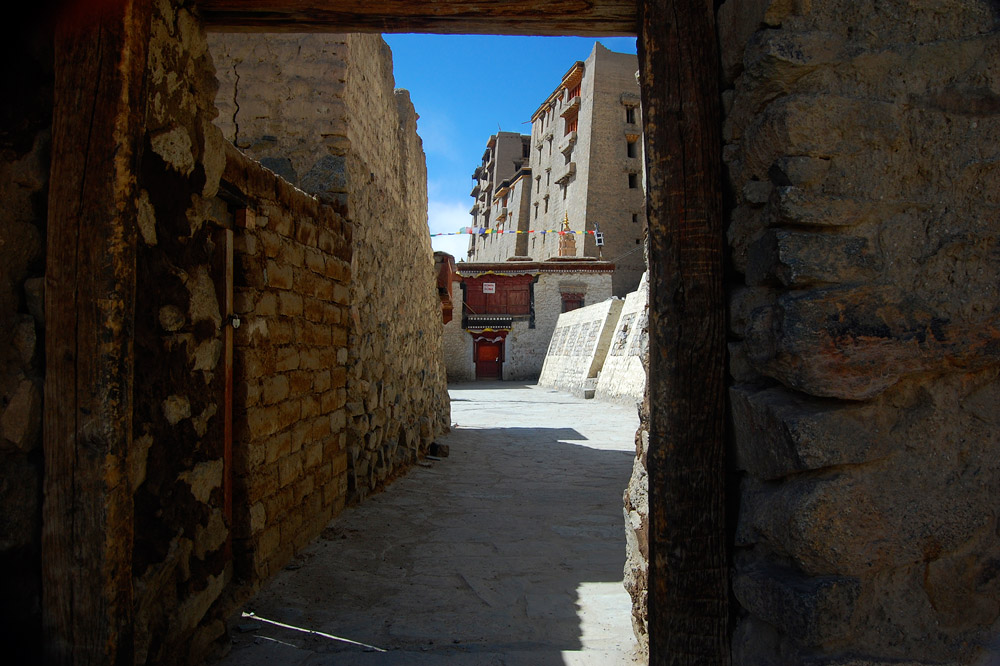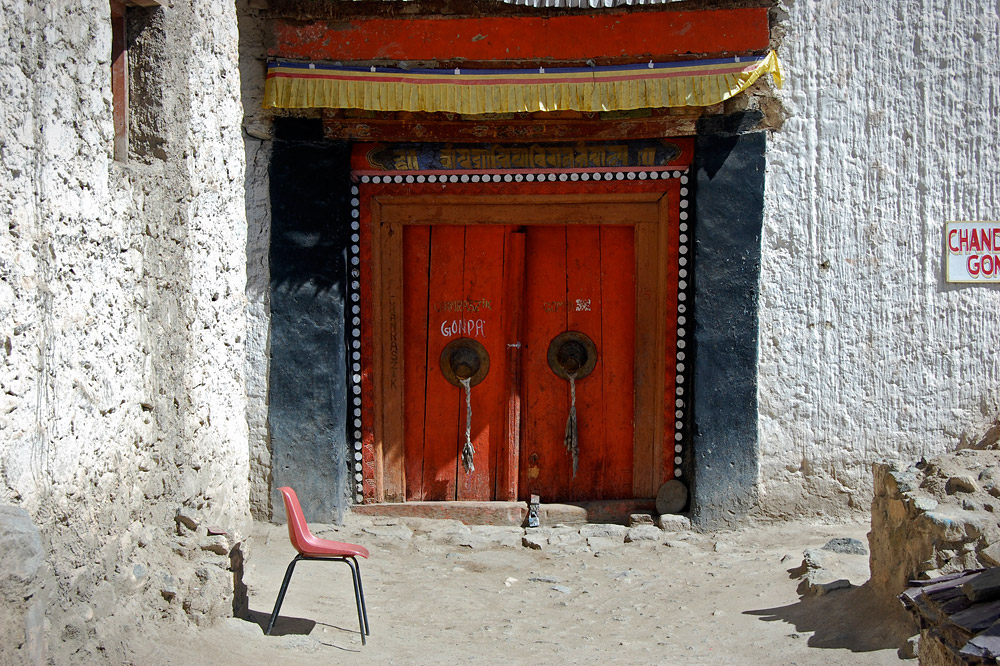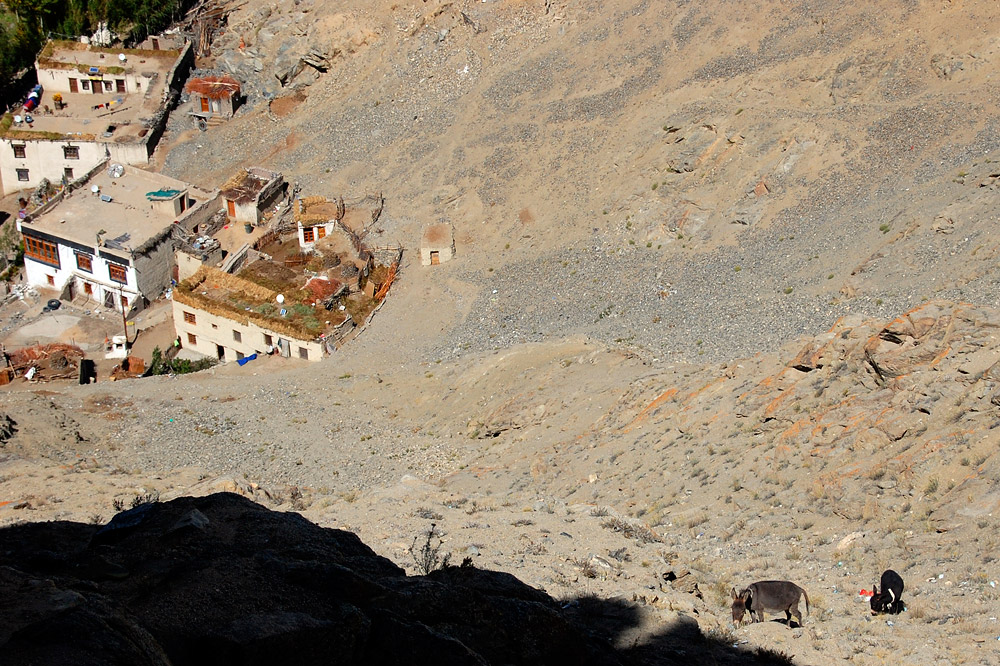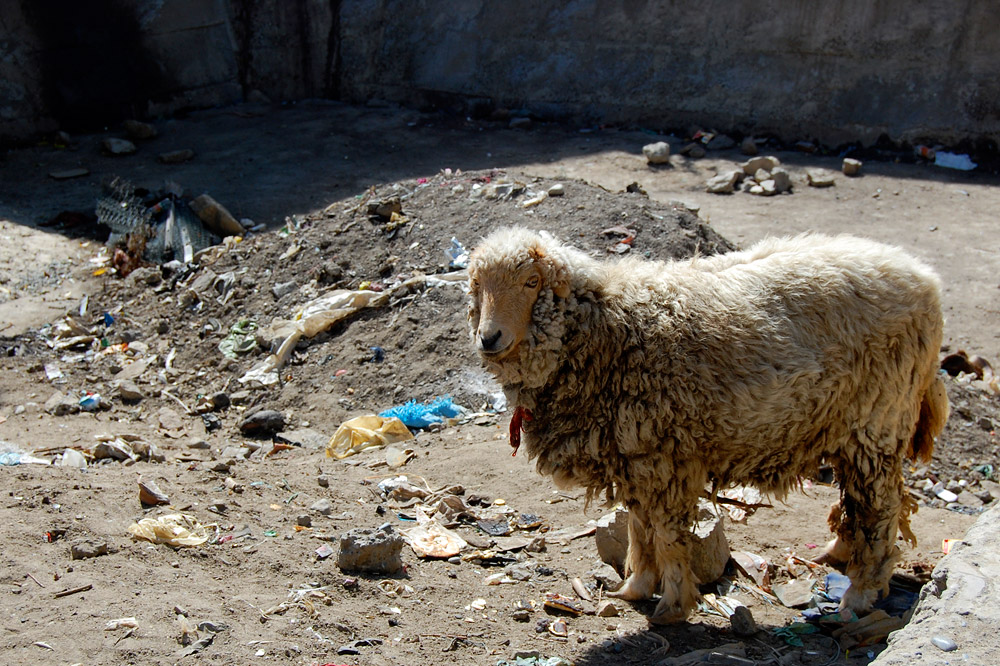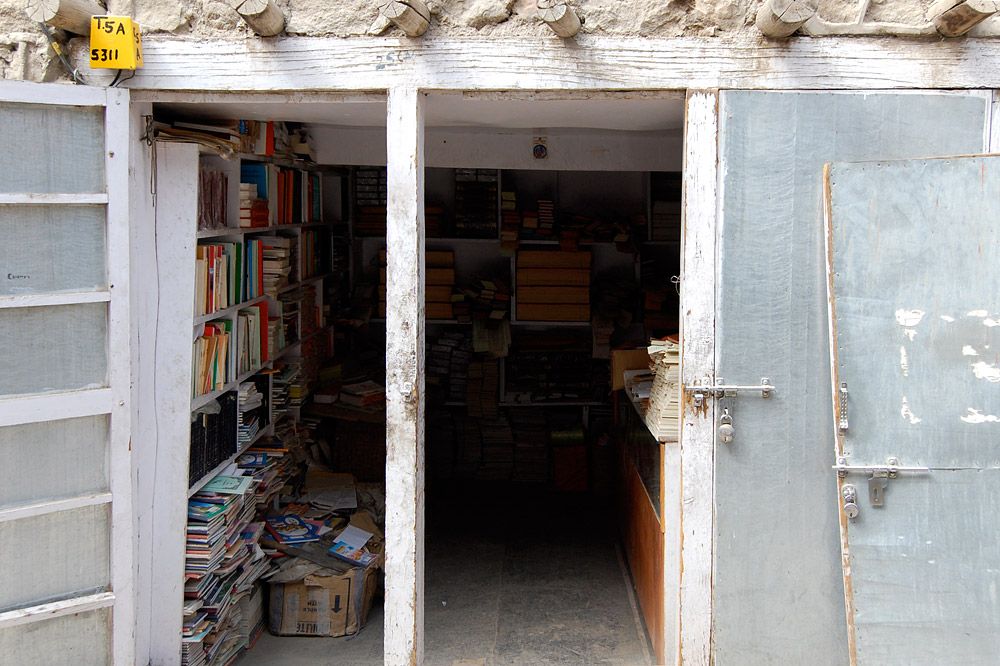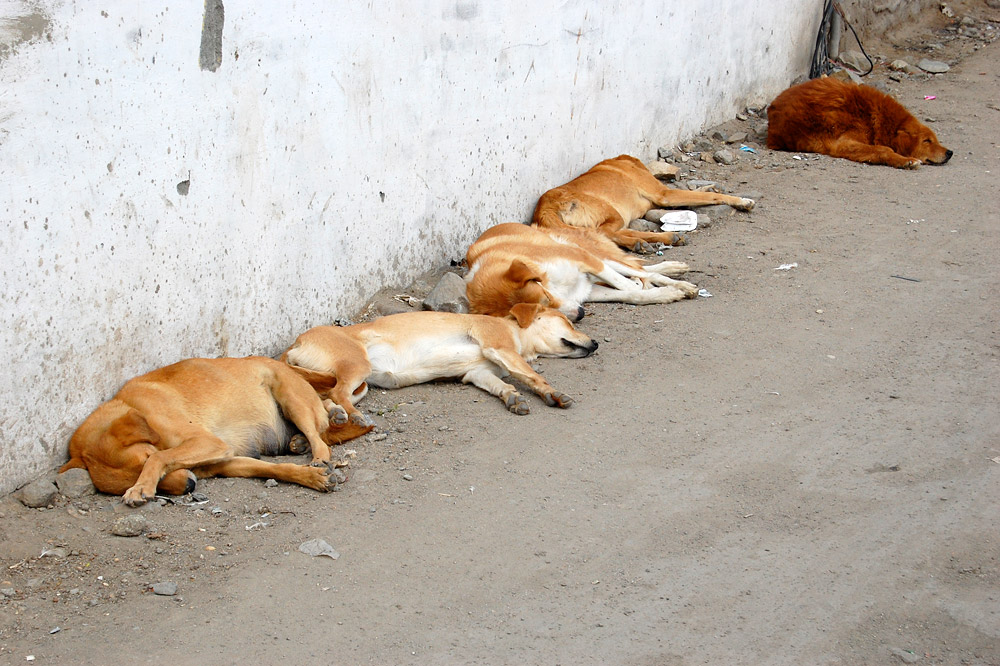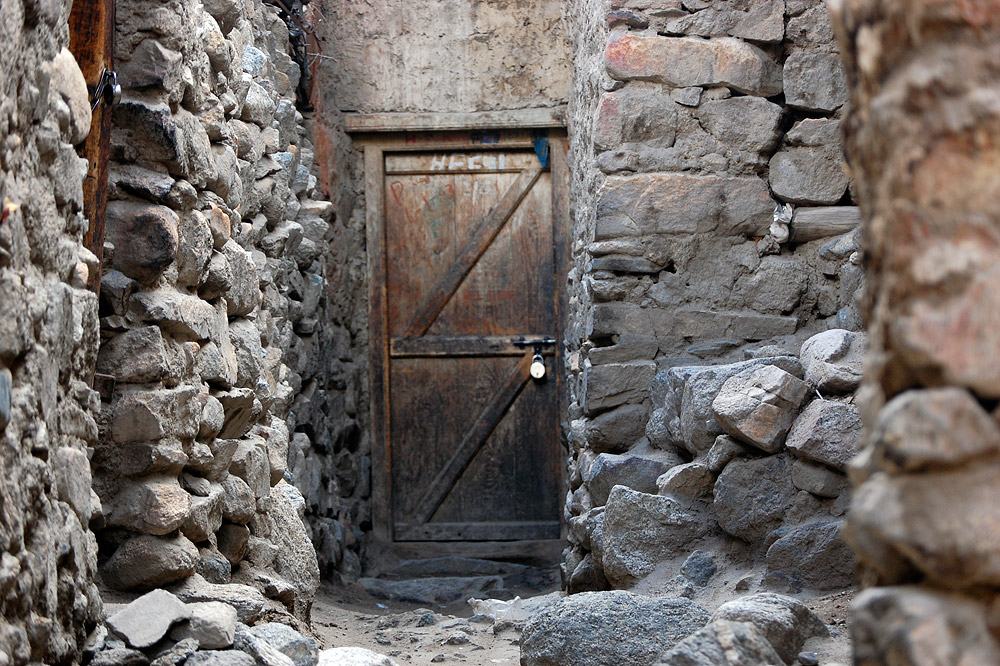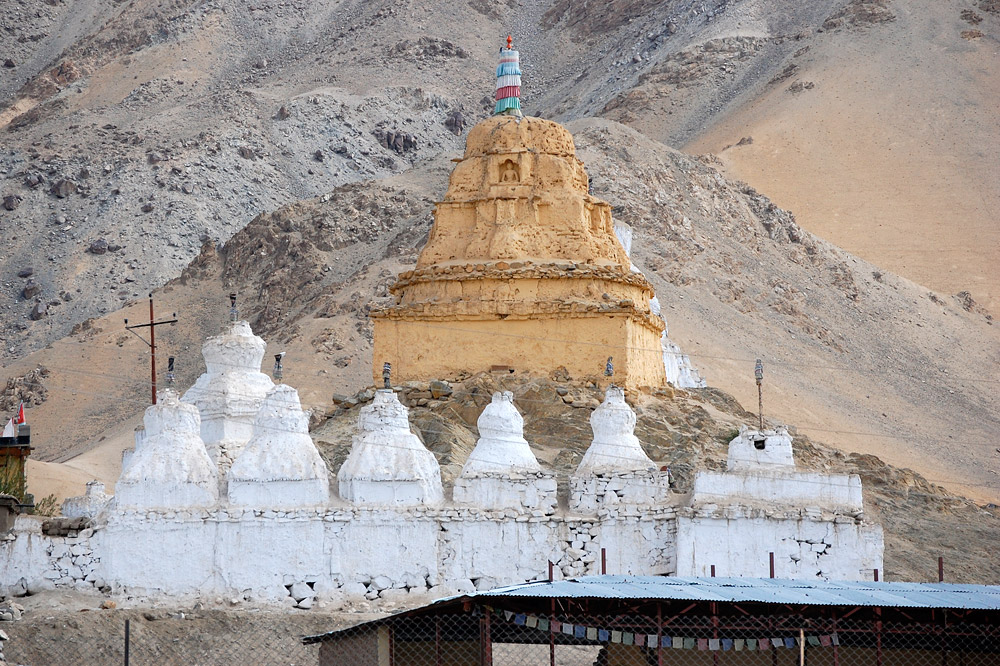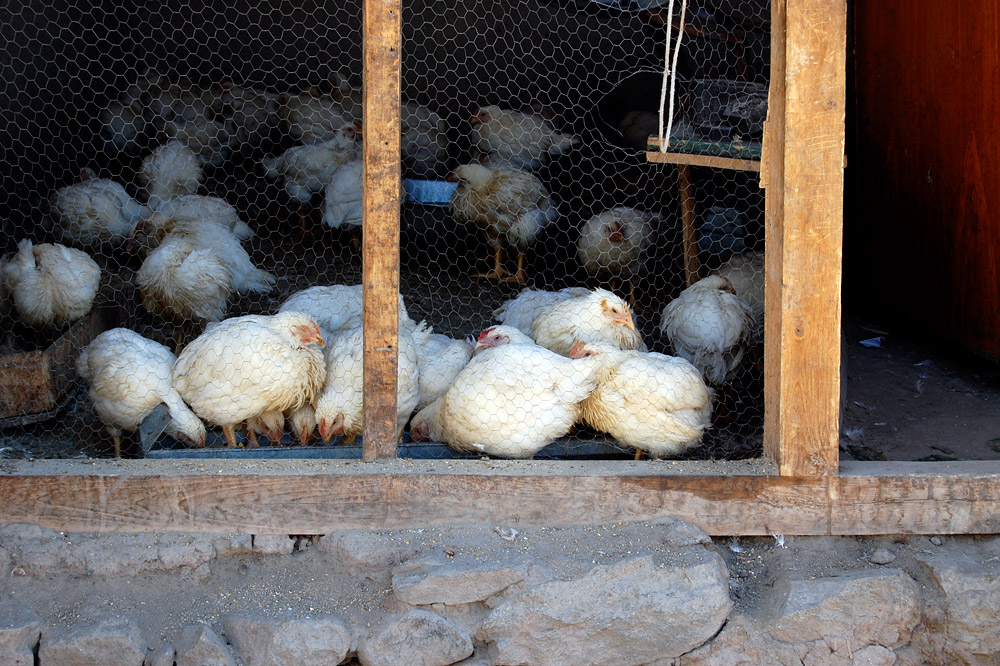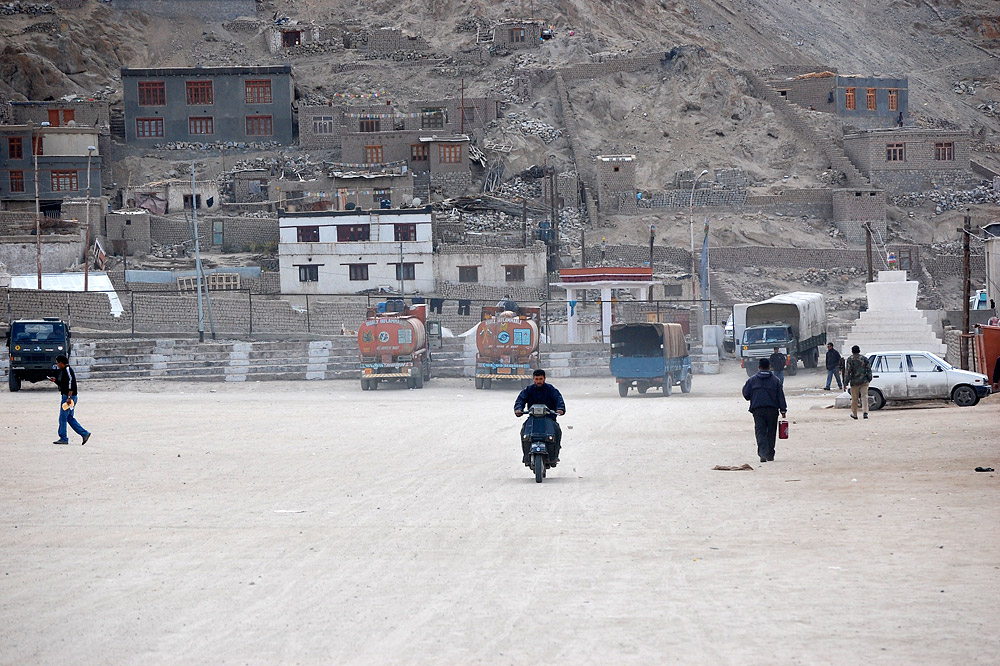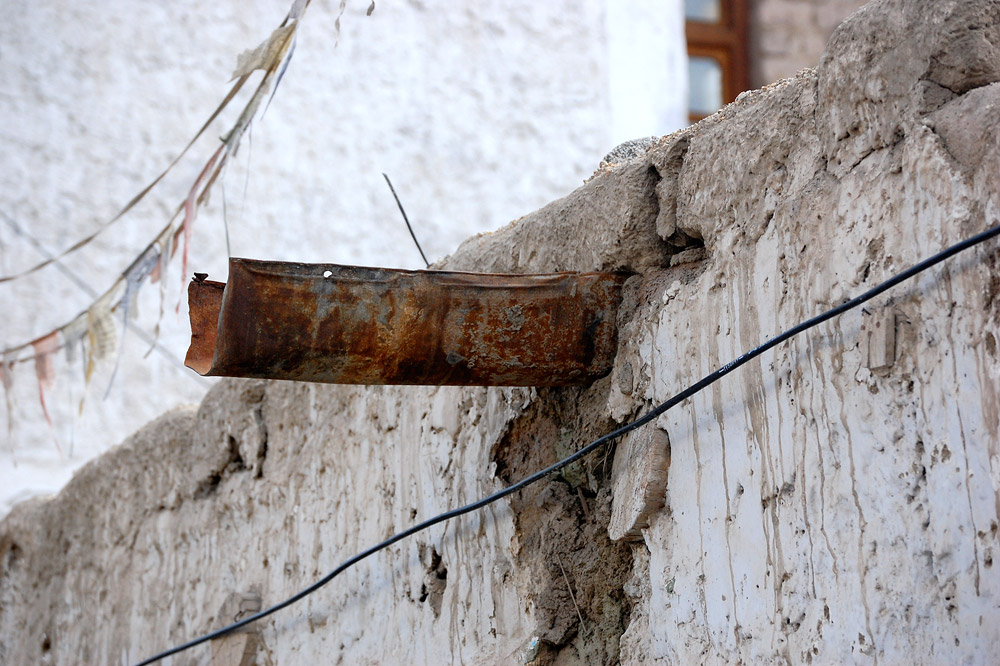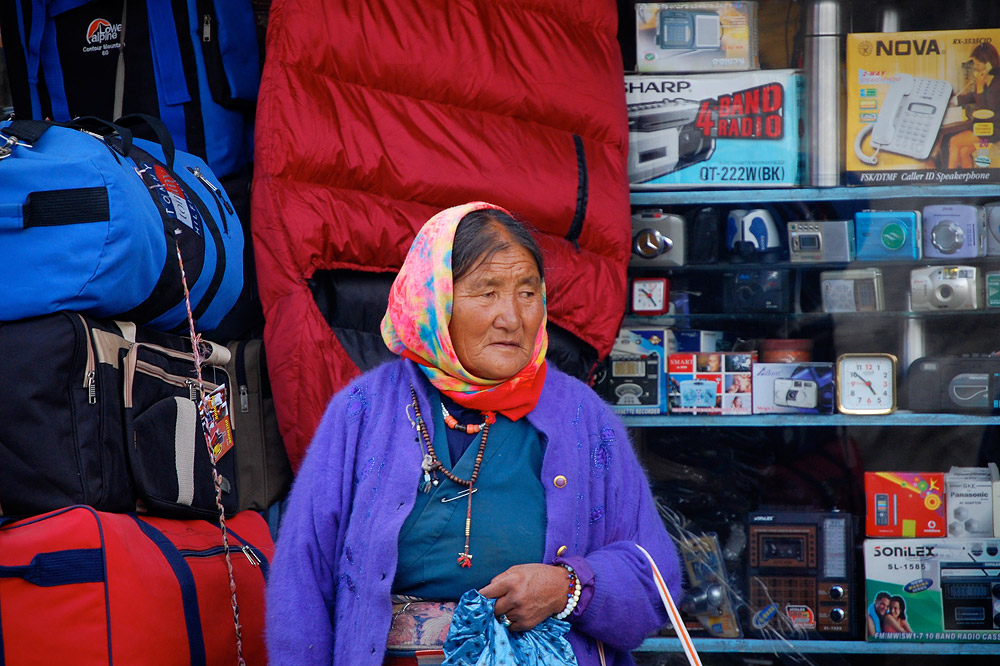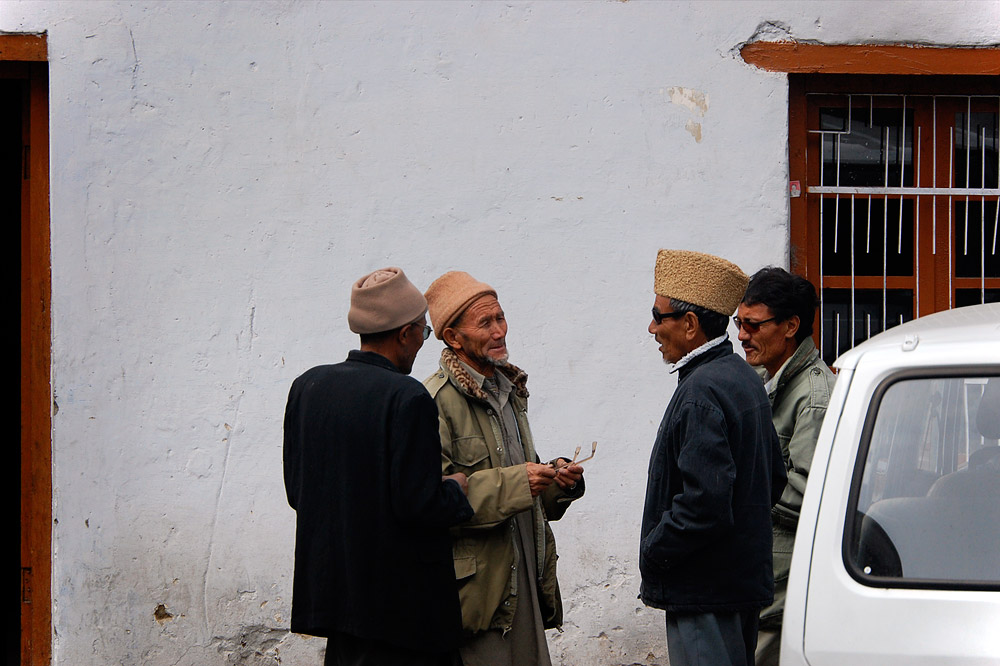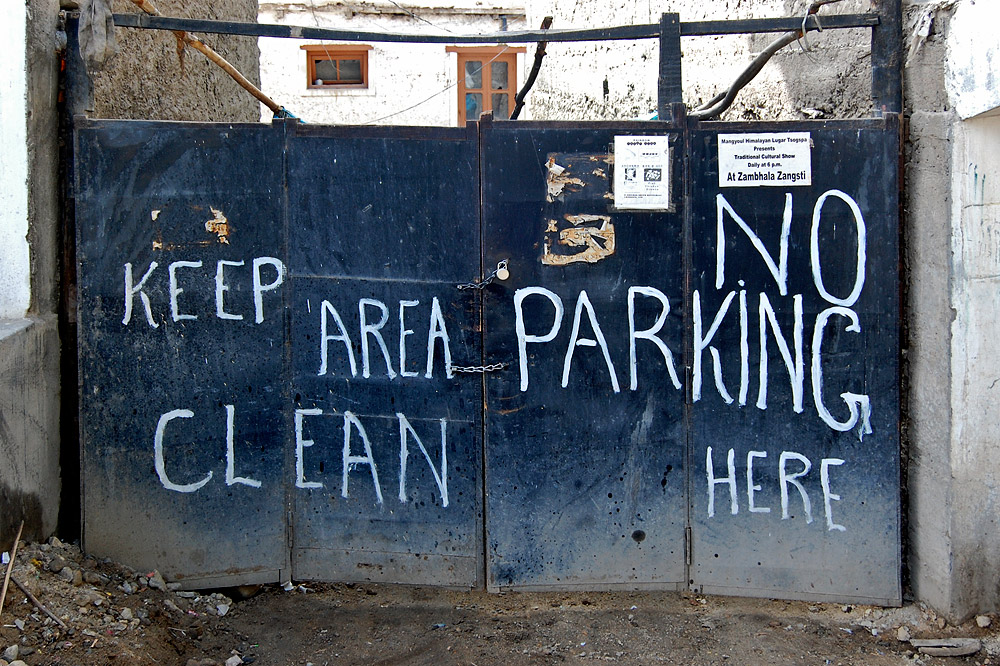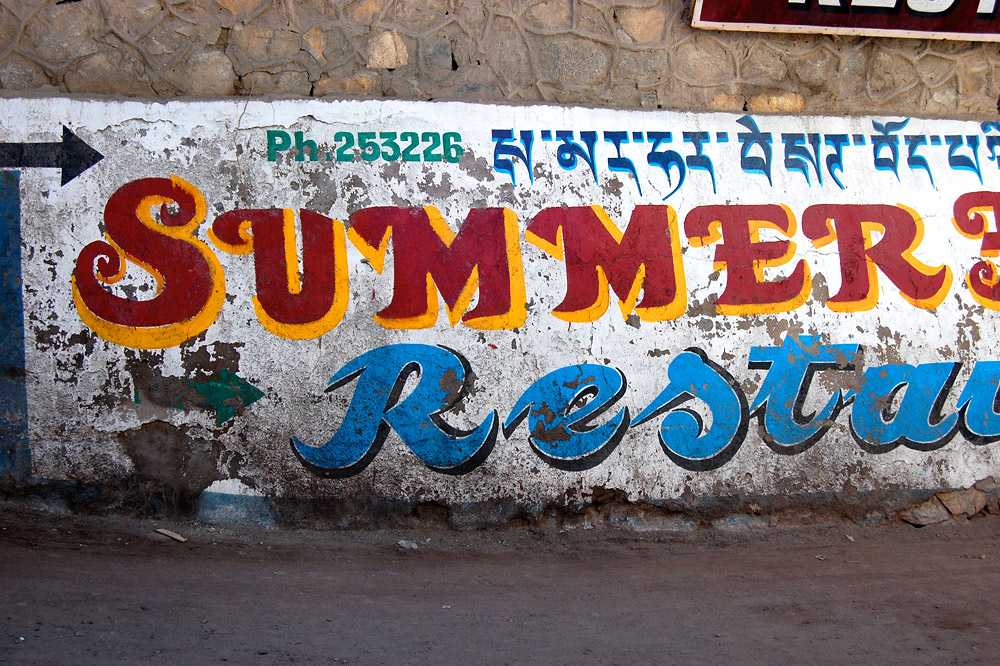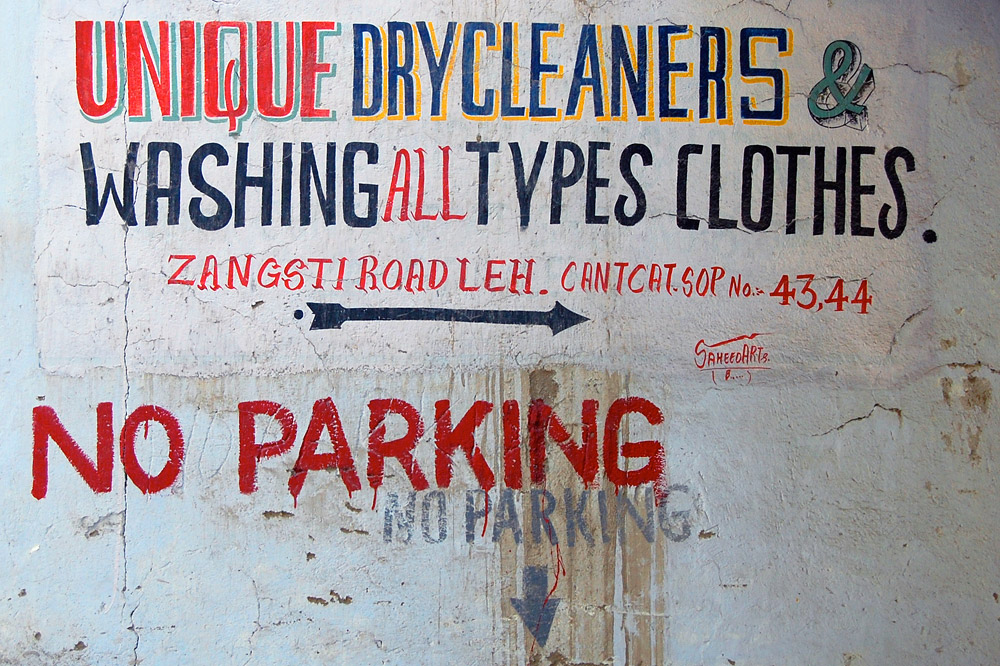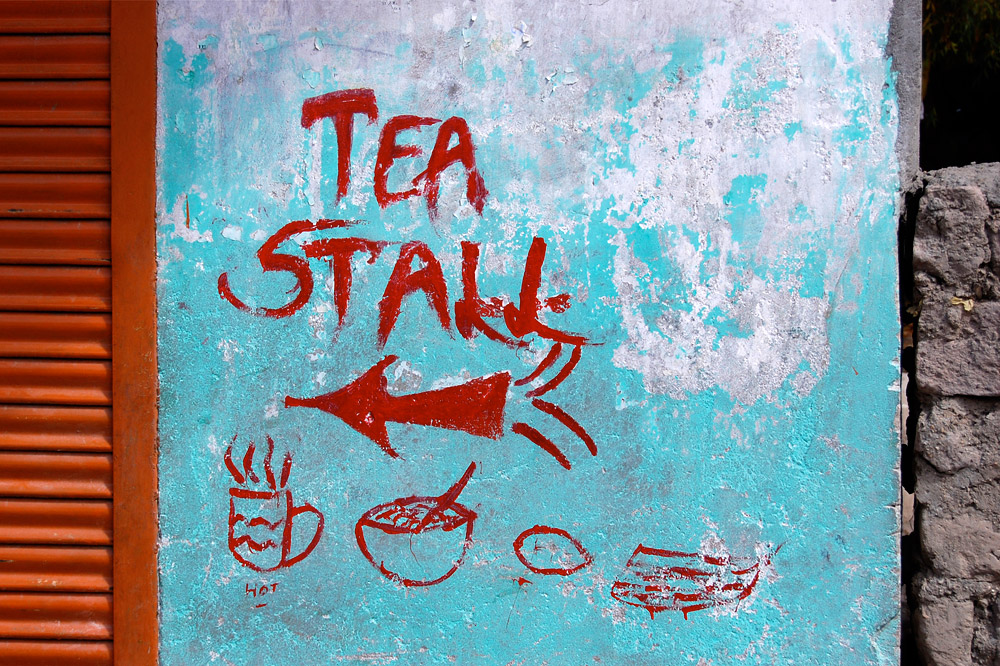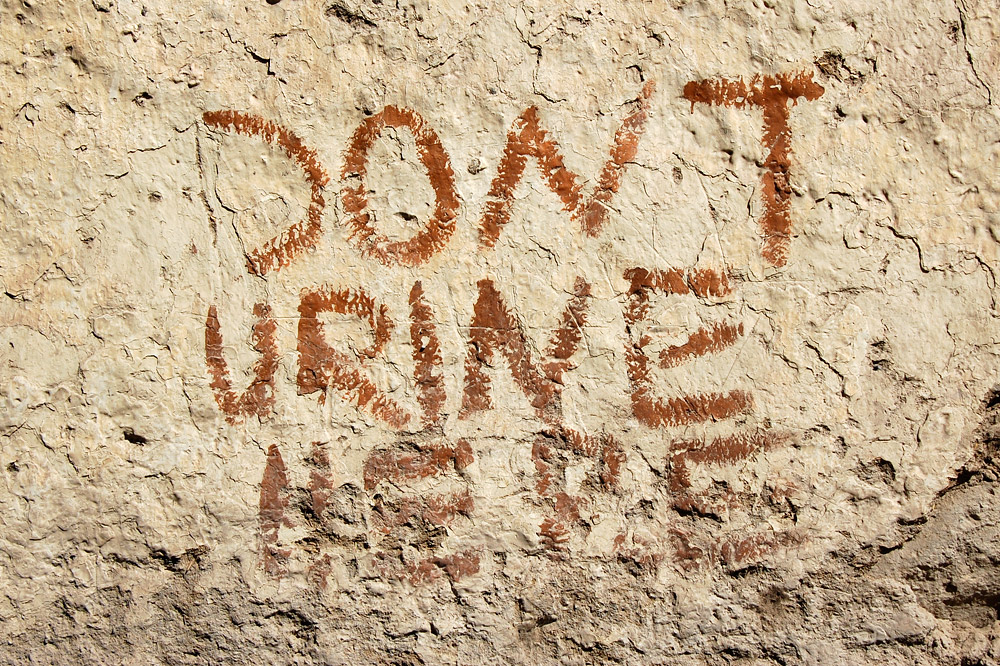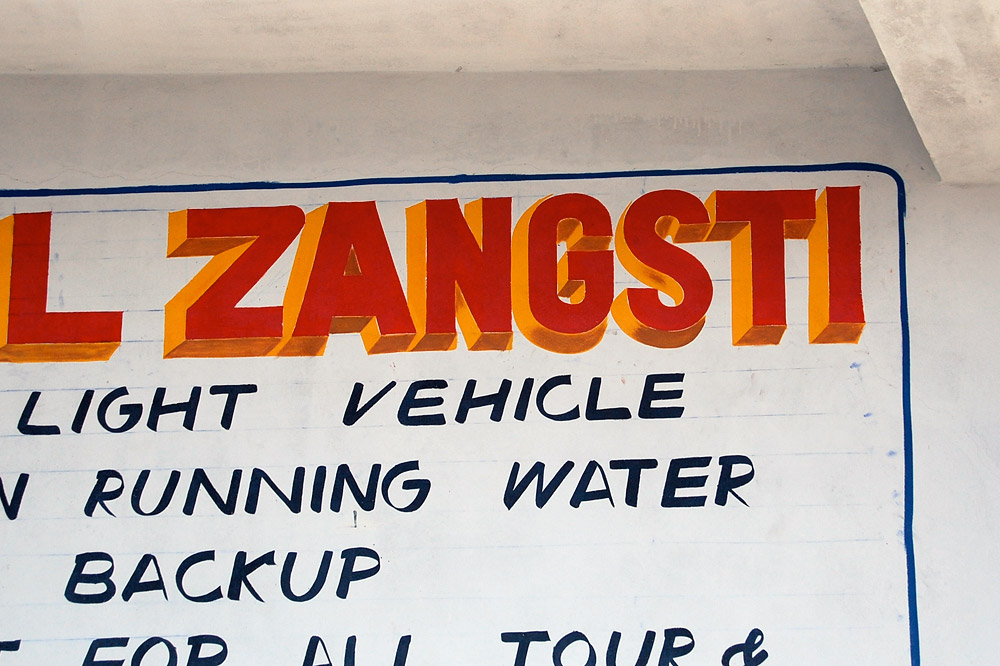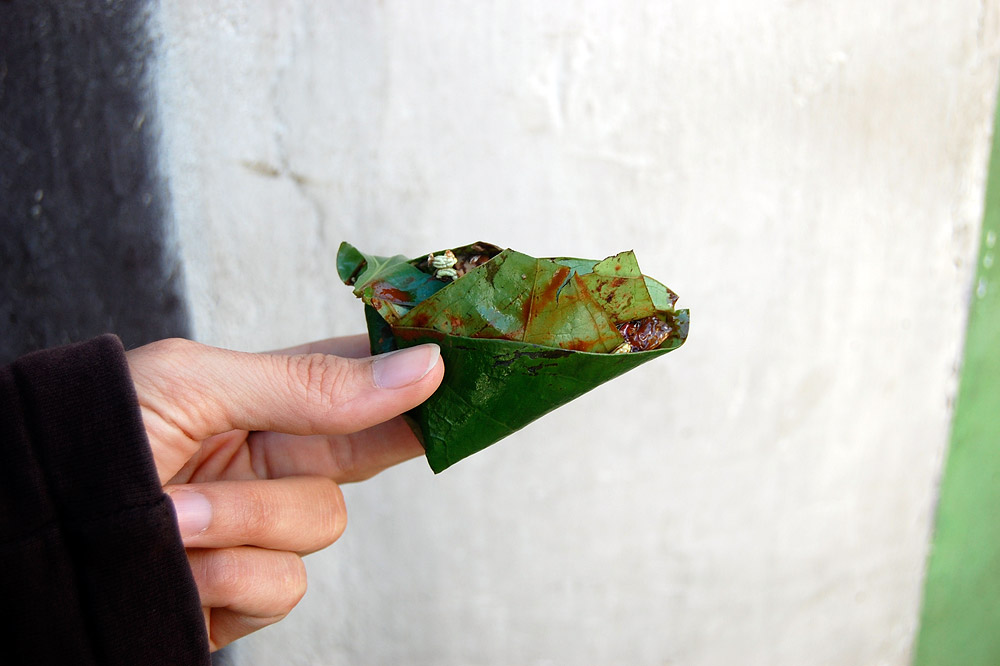The First Two Days in Leh, India
I knew Leh, India was going to be amazing when I looked out the airplane window. The guidebook said the military didn’t allow aerial photos when arriving, but the flight attendants didn’t seem to care.
The massive range of snowy mountains opened up into dusty valleys with a patchwork of farms. The plane began its sharp descent, flew awkwardly close to a foothill, and landed at a tiny, militaristic, and utilitarian airport.
The Himalayas.
One of many settled valleys along the snow fed rivers.
A settlement outside of Leh.
After nearly scraping the top of a mountain, the plane banked hard left and started it’s final approach into the airport. This road must go to nowhere.
Leh town is 3505m high, and is the largest of many small towns in the mountainous region of Ladakh in northern India. The region gets 300 days of sunshine a year and as little rain as a desert. It’s full of active old-school Buddhist monasteries. During the winter months, the area is generally inaccessible by road.
I am in awe. The air is crisp and clean, the colors usually vibrant. A greater sense of austerity and peace connects everything. These days, Leh is clearly a tourist town. But that something special hasn’t been crushed under the weight of trekkers, backpackers, and casual gawkers like me. People here either look like beautiful, strong-featured Tibetans or more Indian. Most are generally friendly, smiling and singing to themselves as they go about their work or walk along the road.
J. and arrived as tourist season ended. We missed the popular polo matches and archery competitions, but we avoided the crowds. Room rates have plummeted too. Our simple double room is 300Rs($7) a night.
Tonight is our second night, and I’m ill-prepared with clothes. Our budget room is spacious but freezing. It has no hot water except that delivered by bucket by the old, leather-faced proprietress named Dolma. When we first landed, she suggested we take a rest to acclimate to the high altitude. This was a good idea anyway as we had only slept 3 hours the night before. Just laying in bed we had shortness of breath. After a nap, we took a stroll around town to get our bearings. The main part of town is only 2km across, with numerous paths too narrow for cars.
Our first stop was Leh View Restaurant to get lunch. We had the whole rooftop patio to ourselves.
The backyard of Dolma’s Guesthouse.
The view from the rooftop dining area was breathtaking. The weather was perfect, if not a little on the cool side. My view looked up the hill to Leh Palace and Namgyal Tsemo Gompa.
A closer view.
In the other direction was a panoramic view of the valley, including this large mosque.
We also spotted a smaller hill on the edge of town with a crumbling structure on top. We decided to head there after lunch. We weren’t quite ready to climb the main hill.
Chairs outside the bathroom area of the restaurant. The green tint comes from a skylight.
Our lunch: Aloo Gobi, Vegetable Kufka, butter and plain naan, coffee, and lemon water. Cost: 200Rs($4.50)
After meal seeds.
Heading to the mystery structure on the hill, we got our first taste of town. It’s a very ancient-feeling place, full of crumbling earthen brick and timber buildings, narrow alleyways, paths, shops, and eateries. The homes around town are of the same earthen brick or concrete style. Cows wander the streets, and sometimes feel as numerous as people. They are in search of anything to eat, even trash.
We got some sweets from this shop. Pictured are jalebis. We have yet to try these syrup-dipped fried batter treats that Lonely Planet seems to mention all the time. We did get some good barfi though.
Small produce shop.
Some walls made from sun dried mud bricks held together with mud mortar. Notice drain with water? All of Leh is irrigated with channels like this. Free water from the mountains.
At the base of the hill, we saw this great view of the mountains and a stray cow eating newspaper.
To the left was one of many weathered stupas.
An old cemetery as seen from the hill.
Farmers threshing.
J on the hill.
From our vantage on the hill, we scoped out our destination for the next day: Leh Palace.
After the hill, we walked back to the guesthouse and took a nap until dinner. We chose a recommended Tibetan restaurant called Tenzin Dickey Tibetan. It was family run. The husband cooked in the back, often among tall flames. The wife took orders and prepared ingredients. The son and daughter delivered orders.
Our meal: momo (dumpling) soup, garlic potatoes, fried cheese and potato momos. The last image was our breakfast the following day. The soup had a wonderful ginger flavor, the potatoes were the smoothest texture and full of sharp garlic and saucy flavor. The fried momos were warm and filling. Our meal cost 170Rs($4).
After dinner, we walked home. We had forgotten our flashlight, and Leh doesn’t have streetlights. In the darkness, we went up a street the had a torrent of ice cold water running down it. J. got her socks wet. The darkness leading to the guesthouse was only illuminated by passing cars. There were cows on it that we tried not to bump into. During a quick flash of headlights, we saw that two cows had headed down the very narrow path we needed to take. Luckily, I had brought my iPod. I used the screen as a dim flashlight. It was just enough to light our way and see the ghostly, glowing eyes of the cows as they squeezed passed us.
Back in our room, we layered our clothes and climbed under shaggy, synthetic fur blankets. It was freezing, and I had trouble sleeping because my double-socked feet kept slipping outside the covers.
We woke early and walked to breakfast at Gesmo Restaurant. We ordered two different egg, potato, and toast combinations. Each dish was 65Rs ($1.50), delicious, and filling. The large wheat rolls were baked on the premises. Well fed, it was time to get walking to Leh Palace.
It also has numerous stray cows wandering the street almost like ghosts: eating trash, avoiding cars, depositing manure on the road, startling you at night on a footpath.
It seems like everywhere we walked in town had a cow walking around. This one was shooed away from eating a vendor’s bread.
Eating newspaper on the edge of town.
Cow examines pile of house trash.
Gutter walker.
Intersection cows.
More intersection cows.
Tibetan bread.
Man washing towels in a creek.
Bread maker.
Dark hallway.
Fancy awning.
Narrow street.
Walking through the crumbling neighborhood on the edge of the hill.
Walkway.
A cow and a dog. There are a lot of stray dogs, but they are almost always sleeping.
There is a limitless amount of cool old doors around town.
The small blue door.
Prayer flags on the roof of a house. Himalayas in the background.
Grass and twig insulation of the roof.
J. on the trail in front of Namgyal Tsemo Gompa.
A long strand of flags spanning the gompa and a neighboring peak. So beautiful.
Me, sitting in the shade of prayer flags.
The mostly empty polo fields.
View of dusty homesteads.
Carved graffiti.
View from above.
Mud brick doorway.
An entrance to Leh Palace.
Gompa doors.
All of the gates to Namgyal Tsemo Gompa were locked, and there were no monks to be found. Since we weren’t able to get inside the gompa, we climbed around it. A pack of donkeys was wandering up the hill. The air was clean and crisp. The sun was bright. It was dusty. We descended.
Donkeys and traditional rooftops.
A door made of metal and wood.
Shaggy sheep.
Bookstore.
Where sleeping dogs lie.
Rocky door.
Security dog.
Weathered stupa.
Chickens and eggs for sale.
Dusty polo grounds.
Colorful truck.
Spout.
Wild flowers.
Lady of Leh. People are either camera shy or annoyed, so it will be harder to take people photos here. Telephoto time!
A serious discussion.
Leh has an abundance of hand-painted signs.
They make the place feel a little like Mexico.
Sign.
Sign.
Tea stall and pictograms.
But what about writing with poop?
The last sign photo, I promise.
For lunch we had India food again. It was also good. For desert, I found a shed sized storefront with a man sitting inside. He sold individual cigarettes and paan.
Paan mitha (sweet paan).
Paan is a fragrant mixture of mildly narcotic betel nut, lime paste, spices, and condiments wrapped in an edible paan leaf. There is also a tobacco variety. Paan is responsible for all the red spit stains all over India. We paid the man 17Rs and jammed the large packets into our mouths. We weren’t sure if we were supposed to chew it and swallow the juice, so we just let it sit there. I found the flavor to be minty and delicious. J. was disgusted by the thing. Tomorrow, I will eat it the right way.
Tonight I will go to bed wearing three shirts and a jacket. There is a chill in the air again, and I need my ugly sleep.


